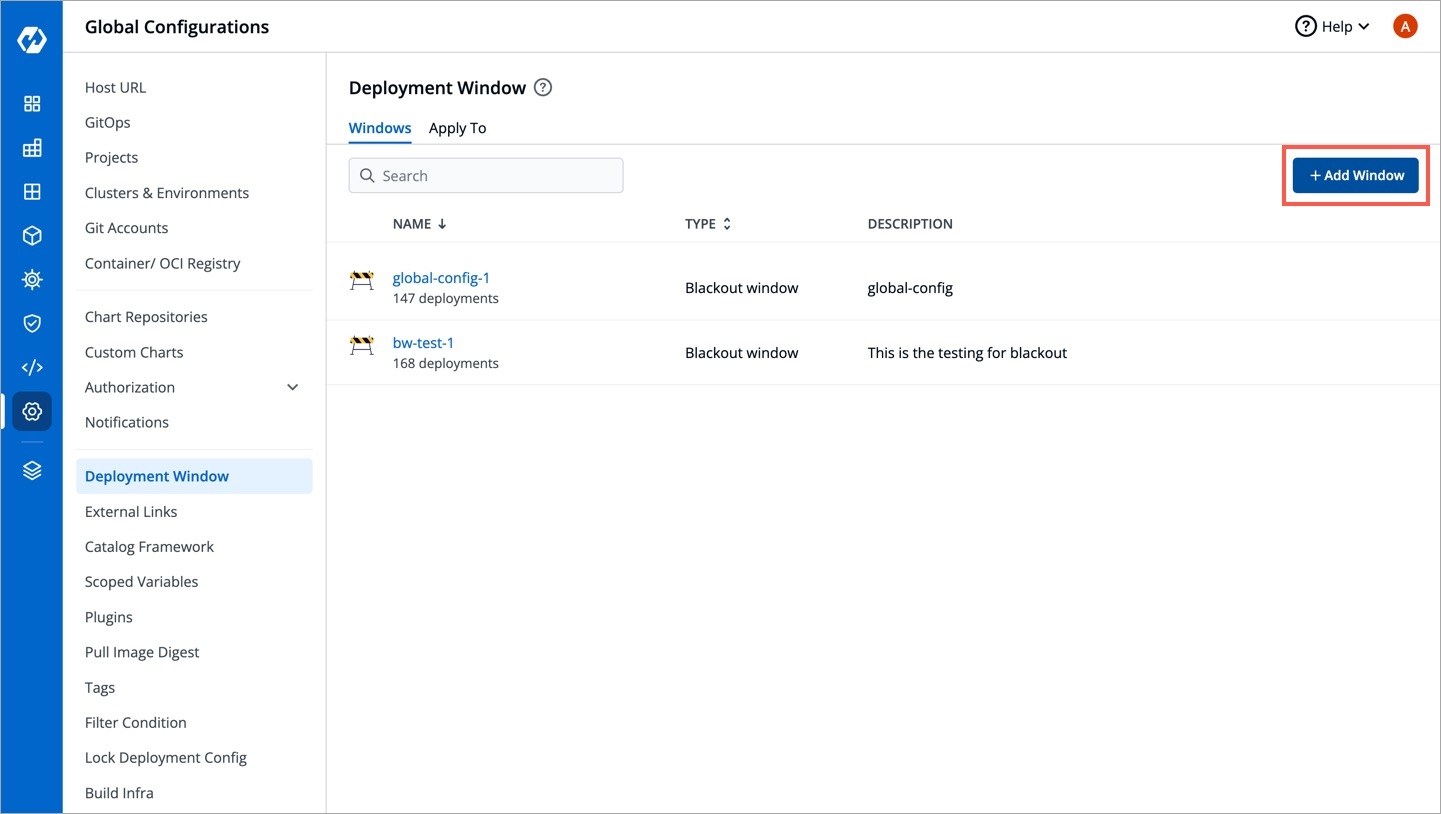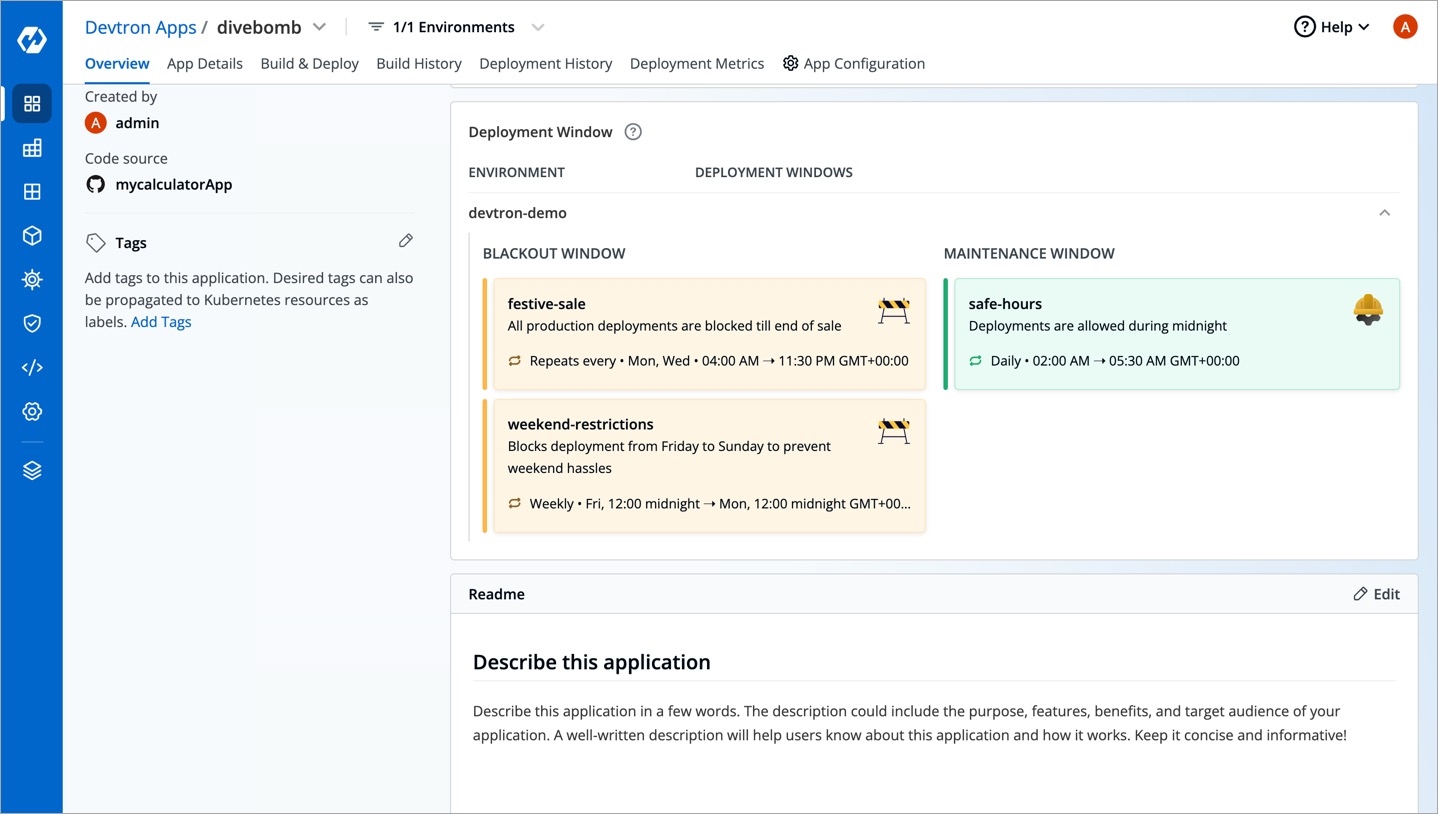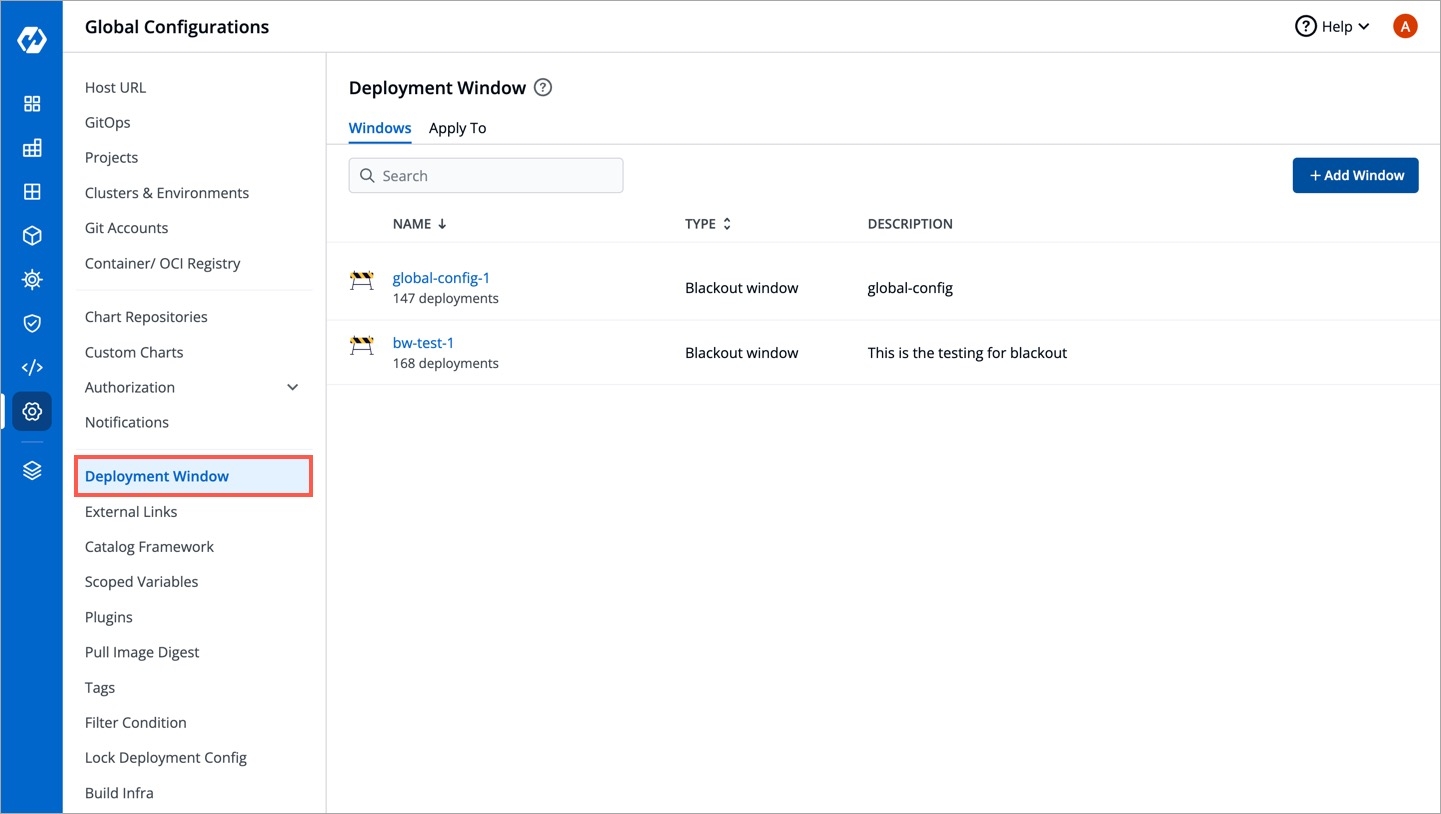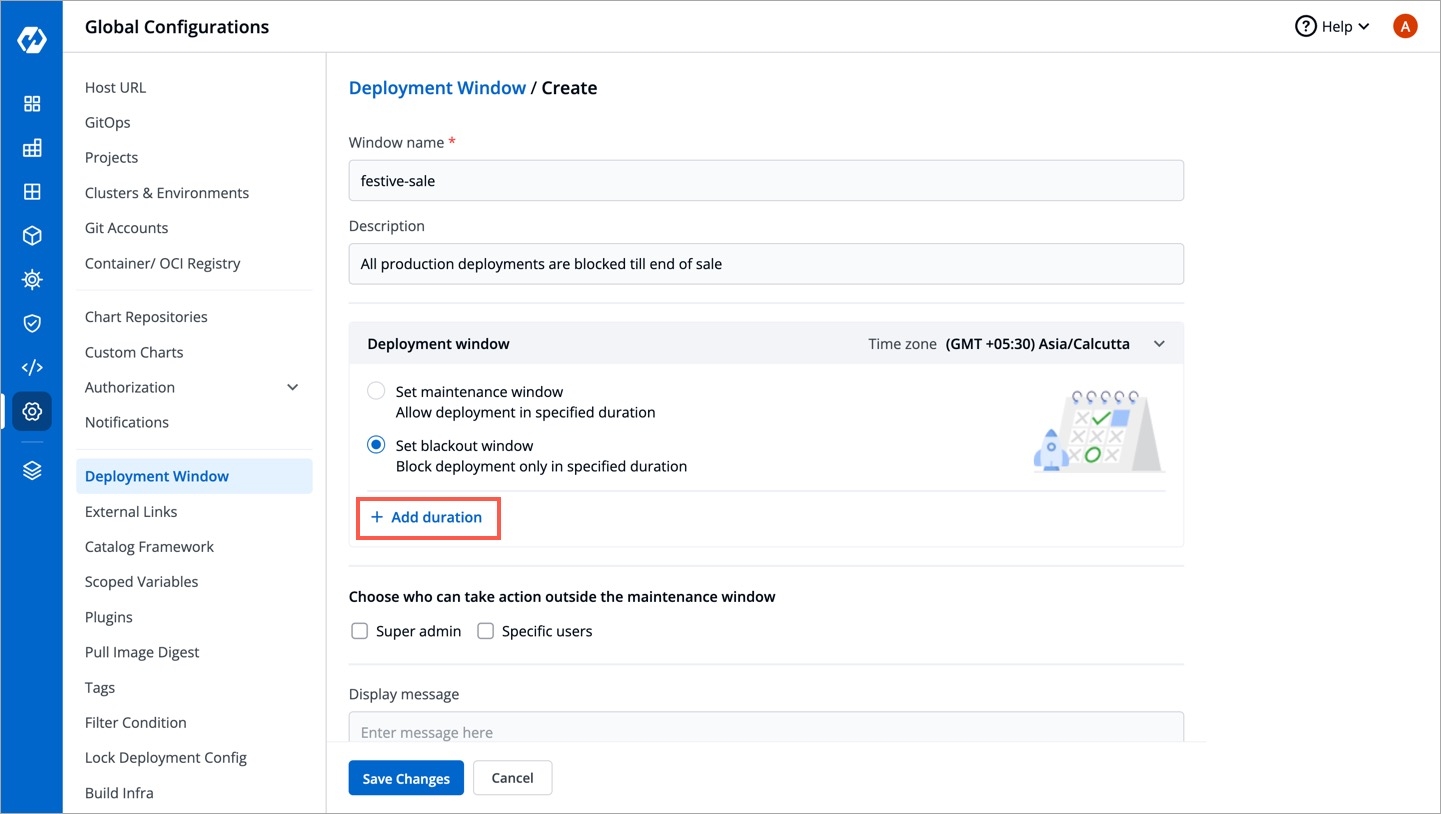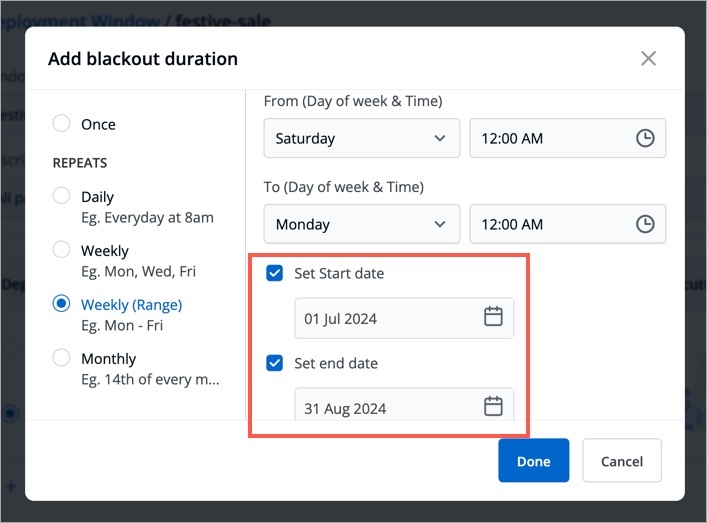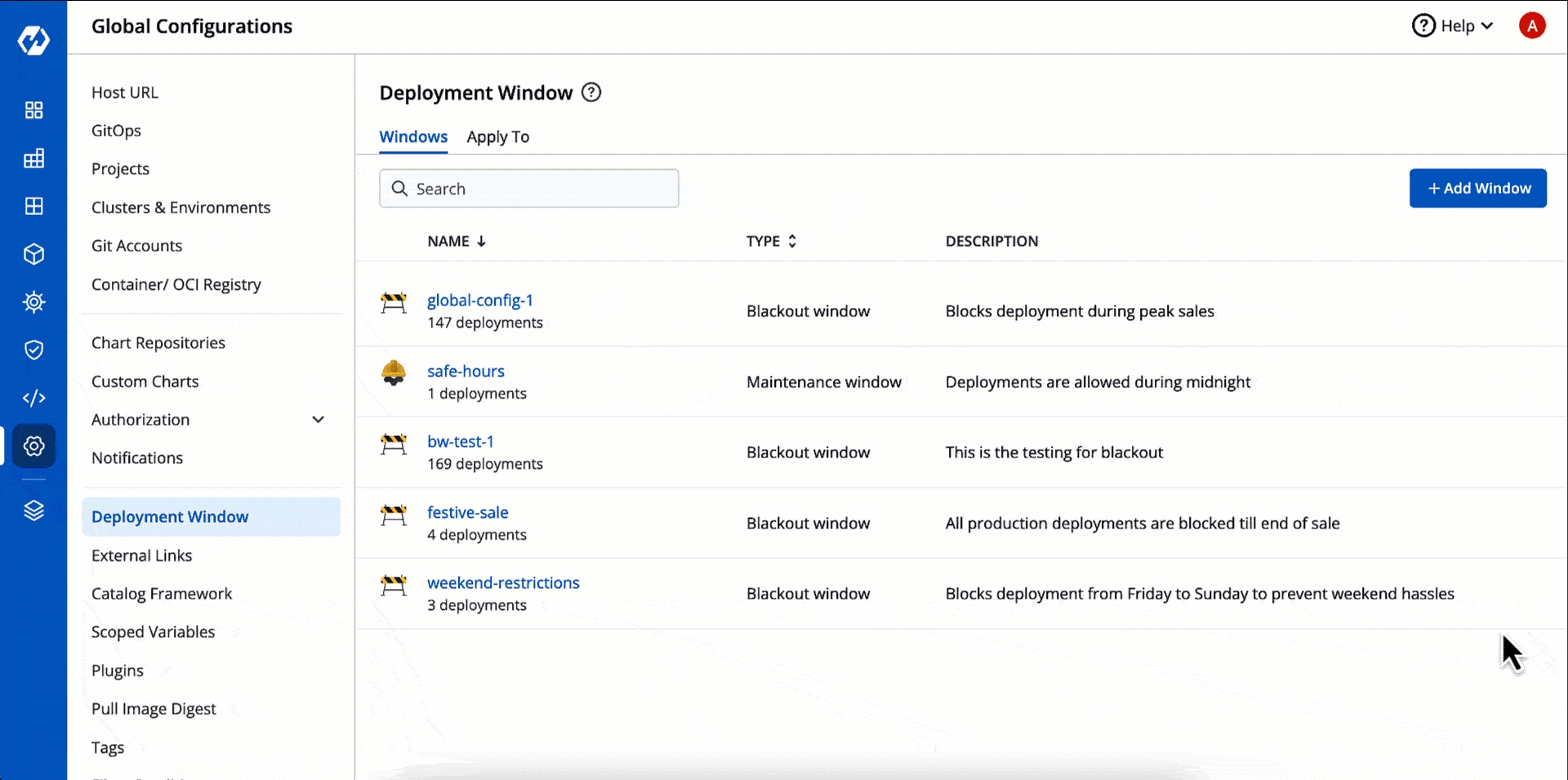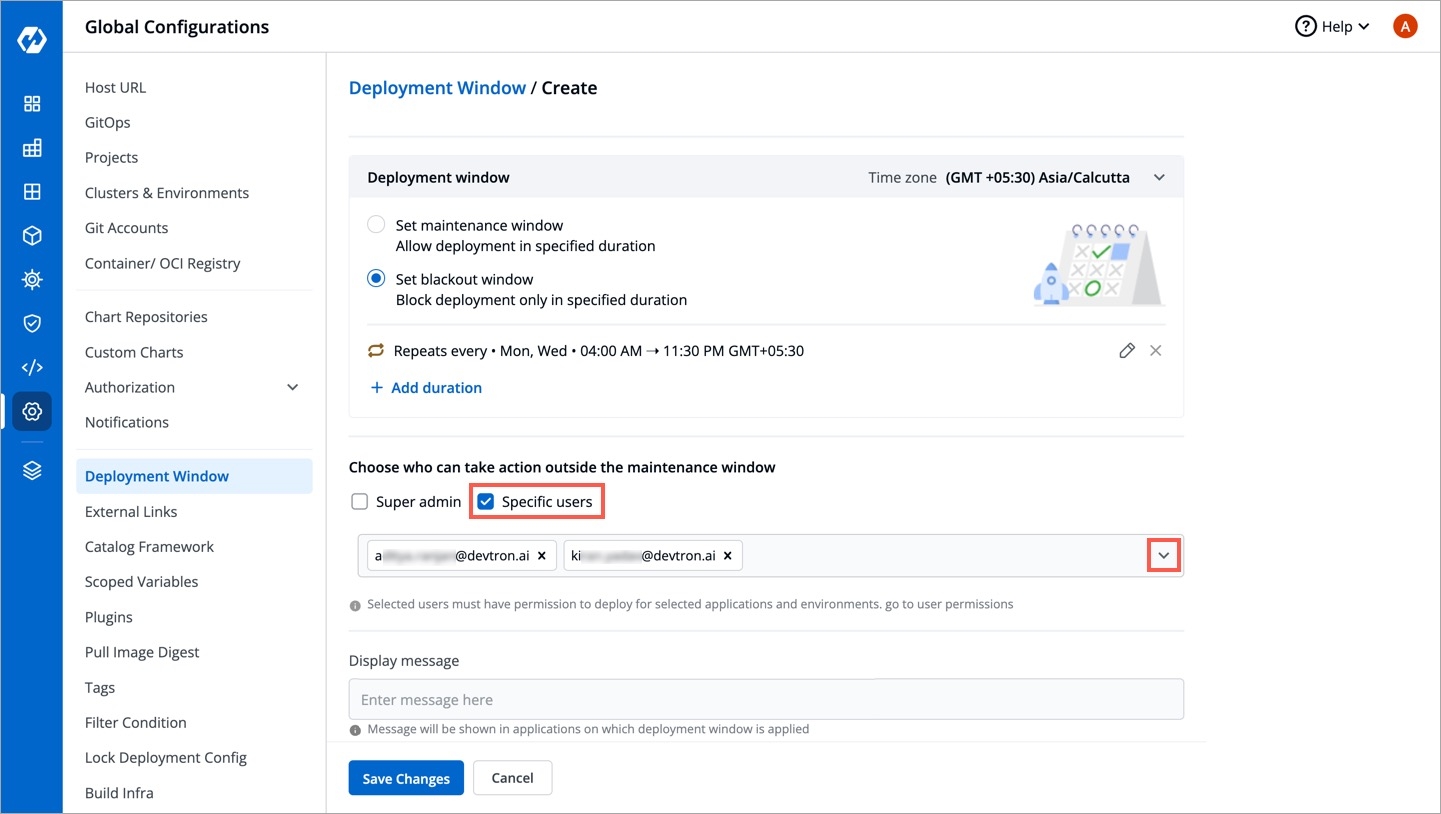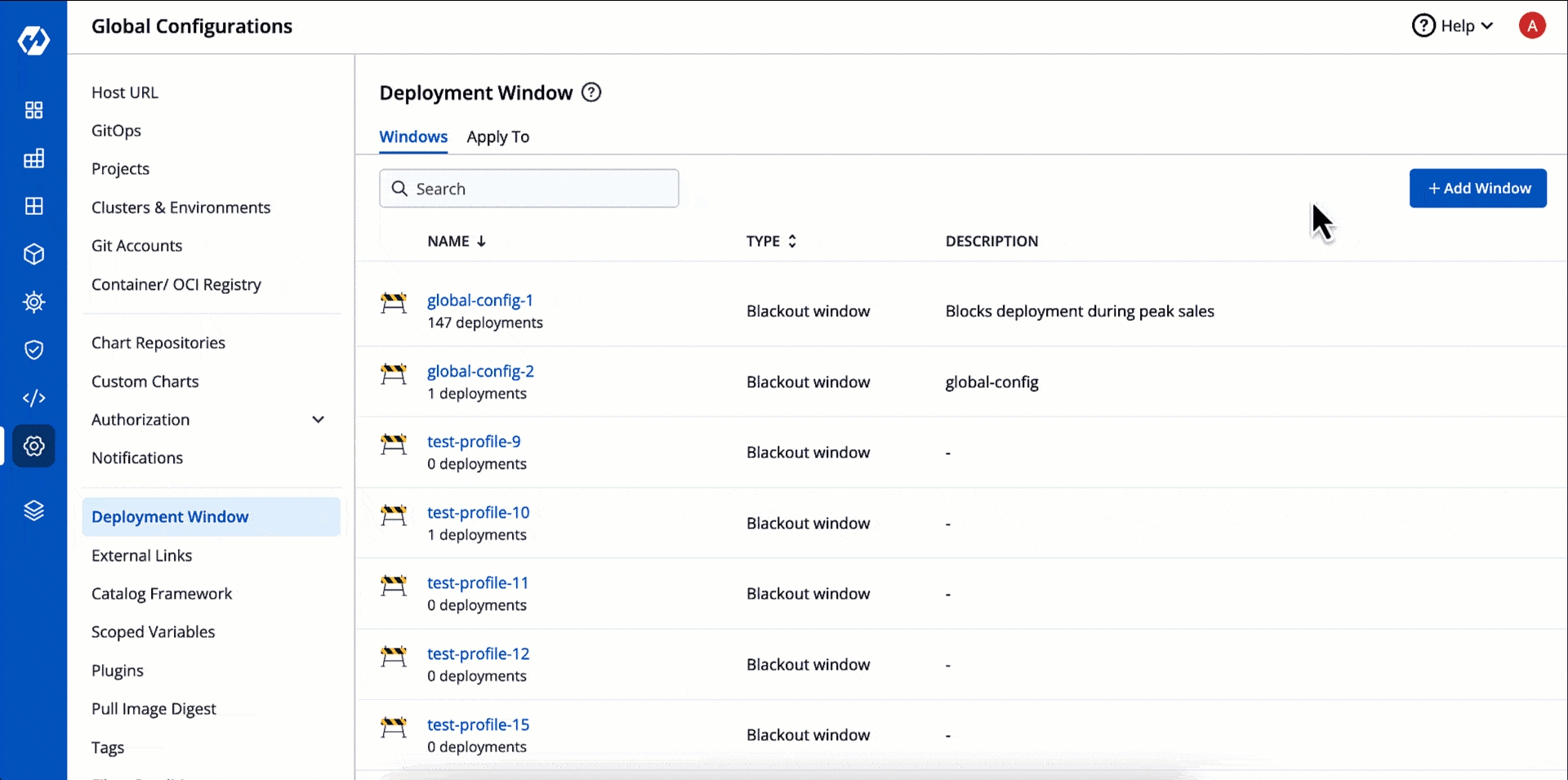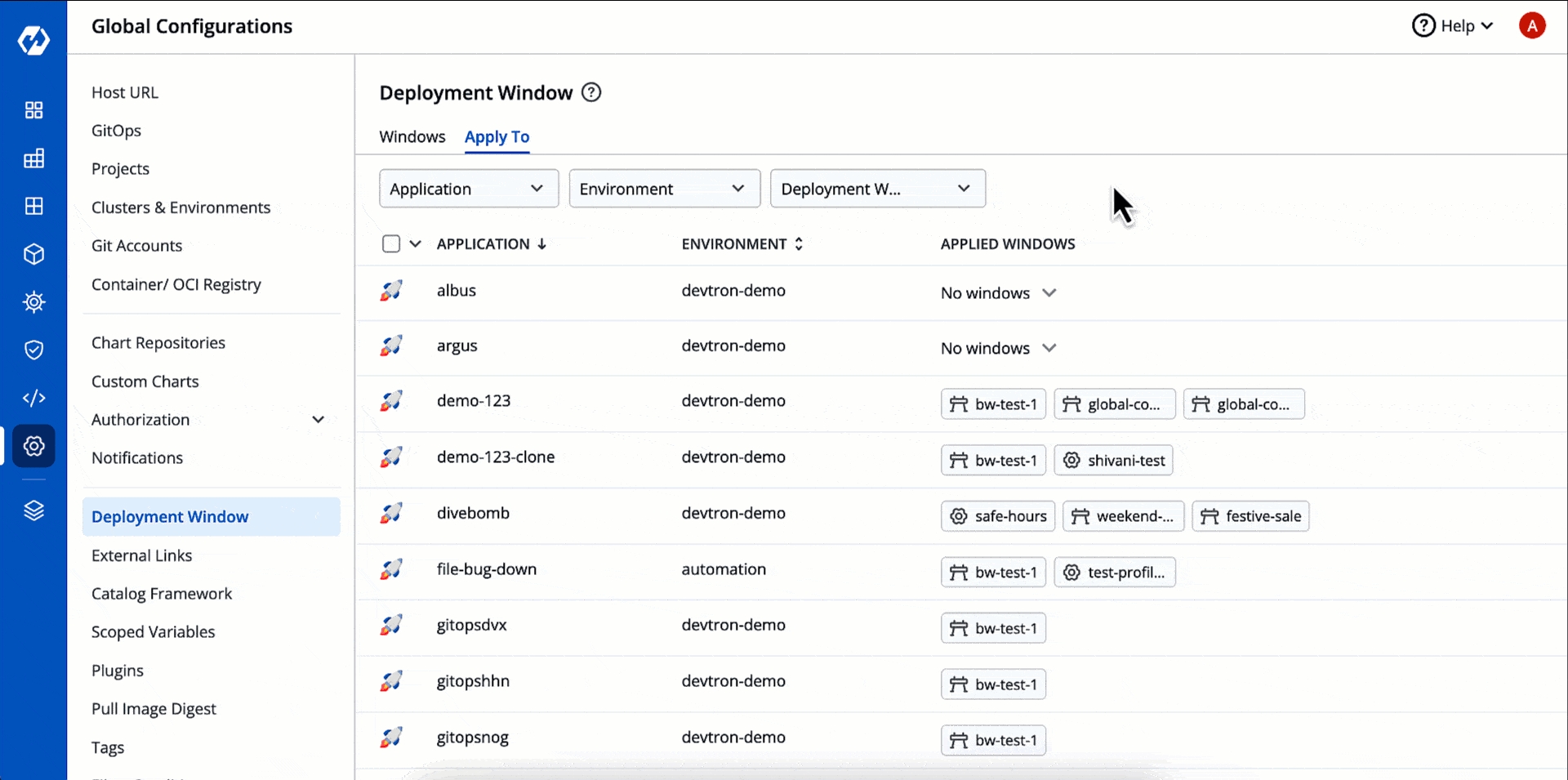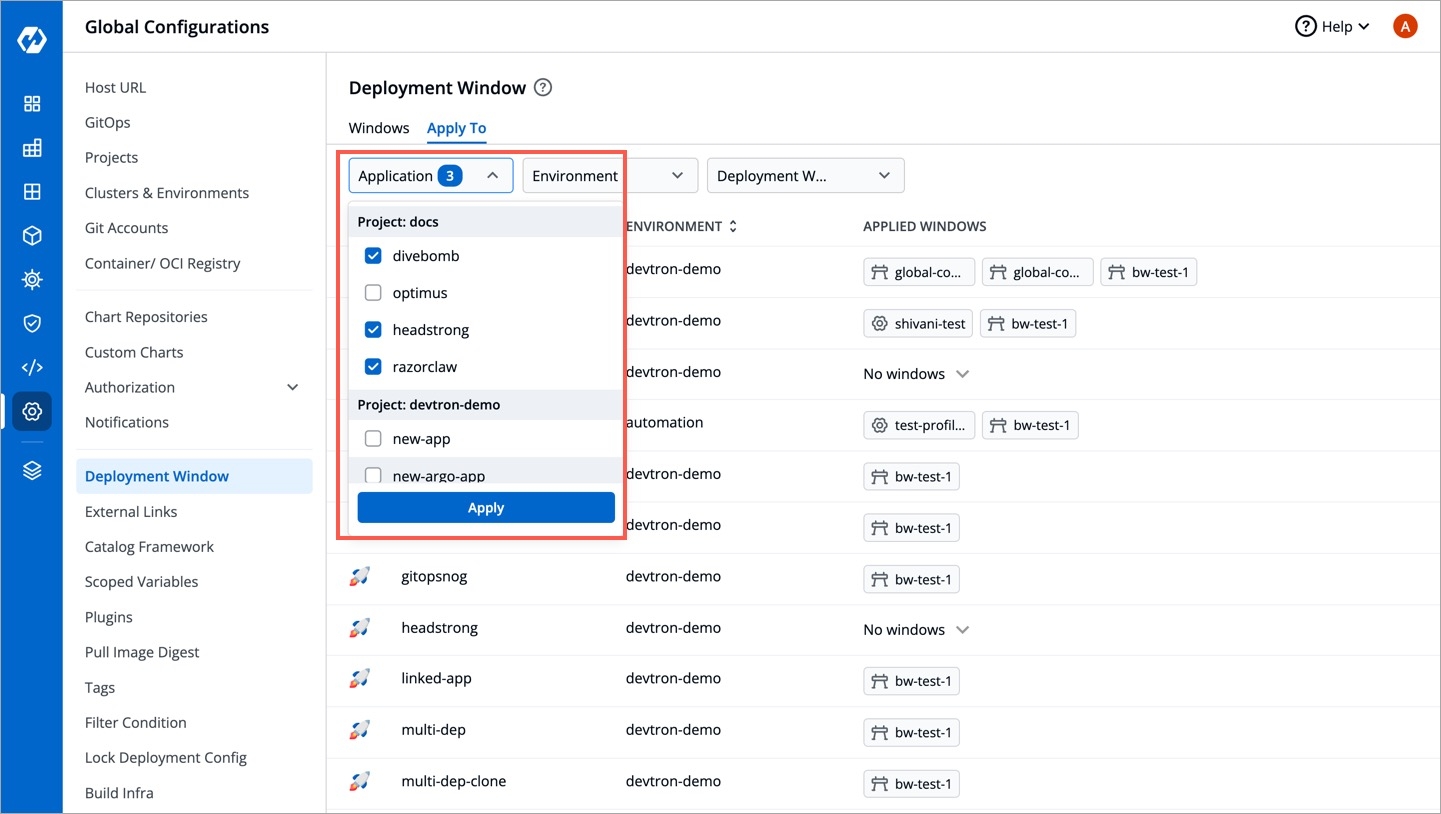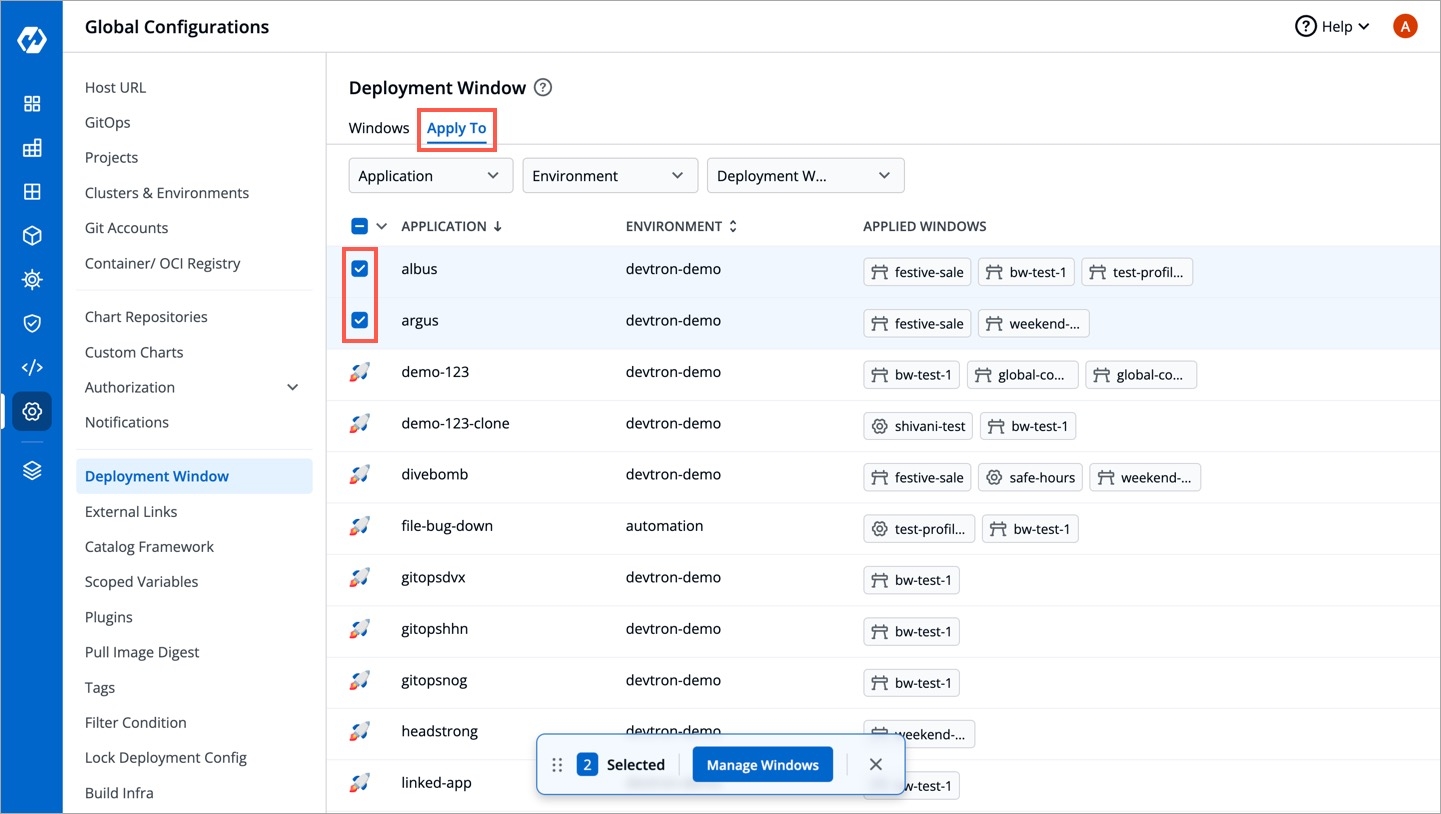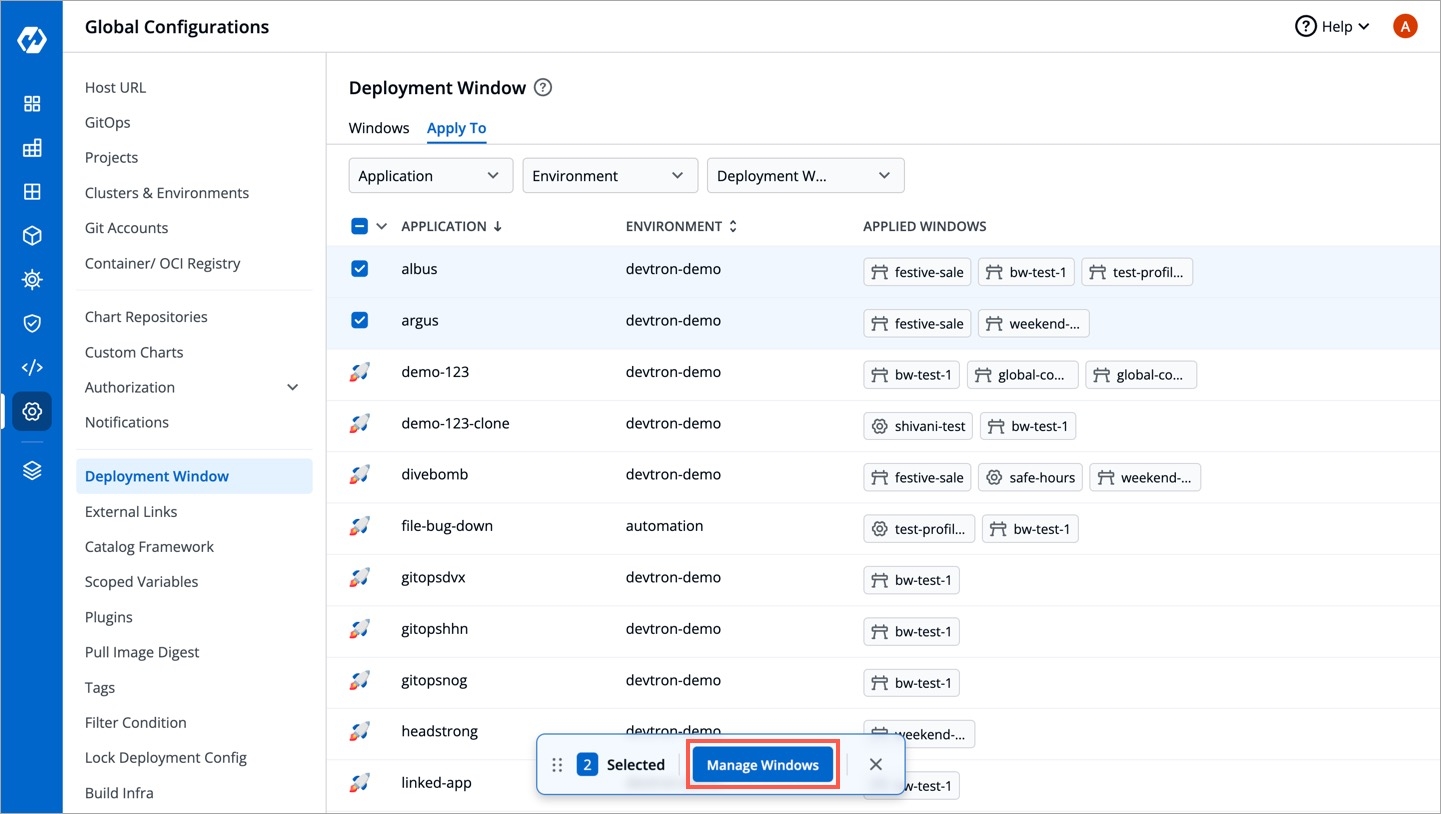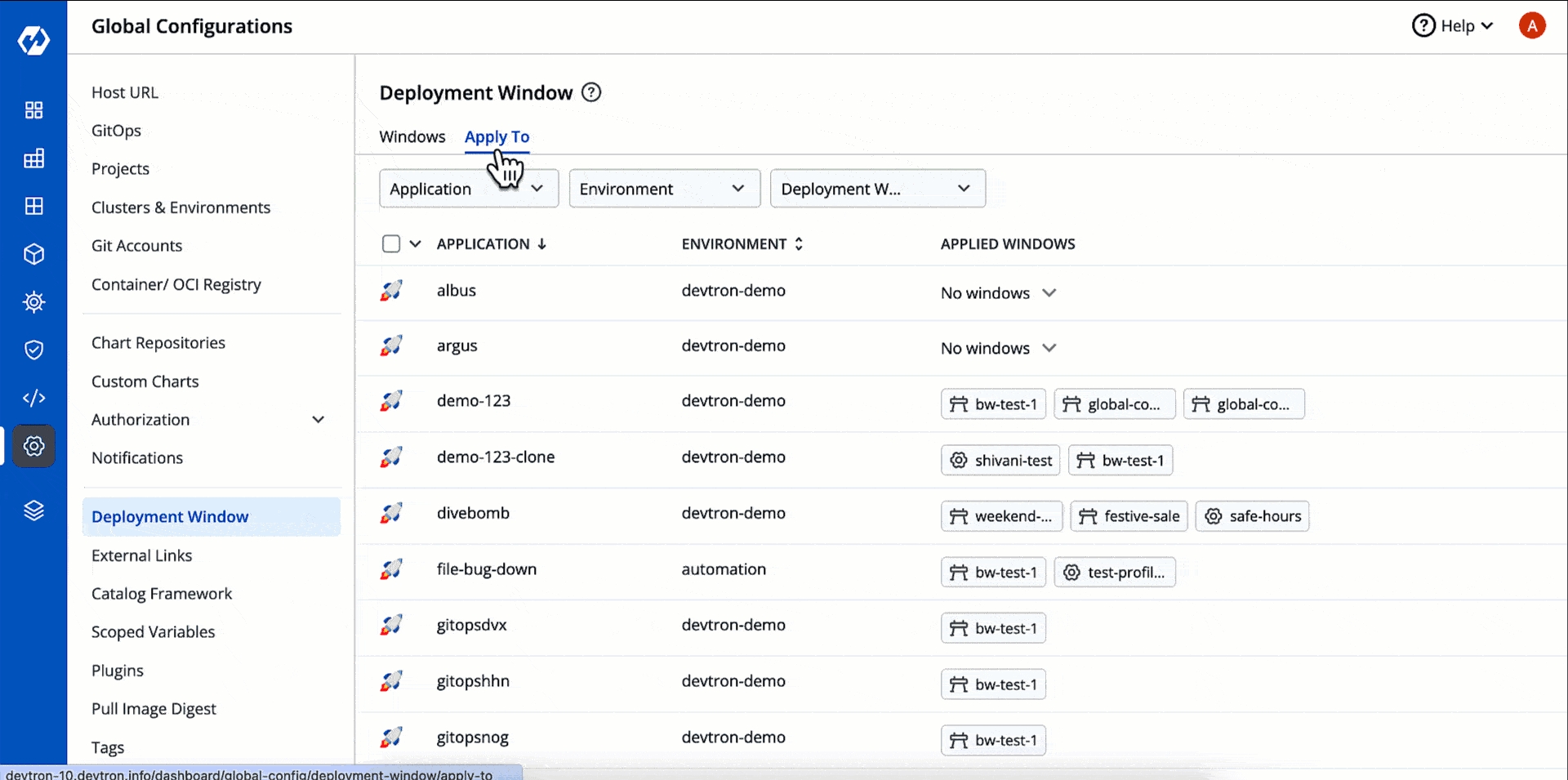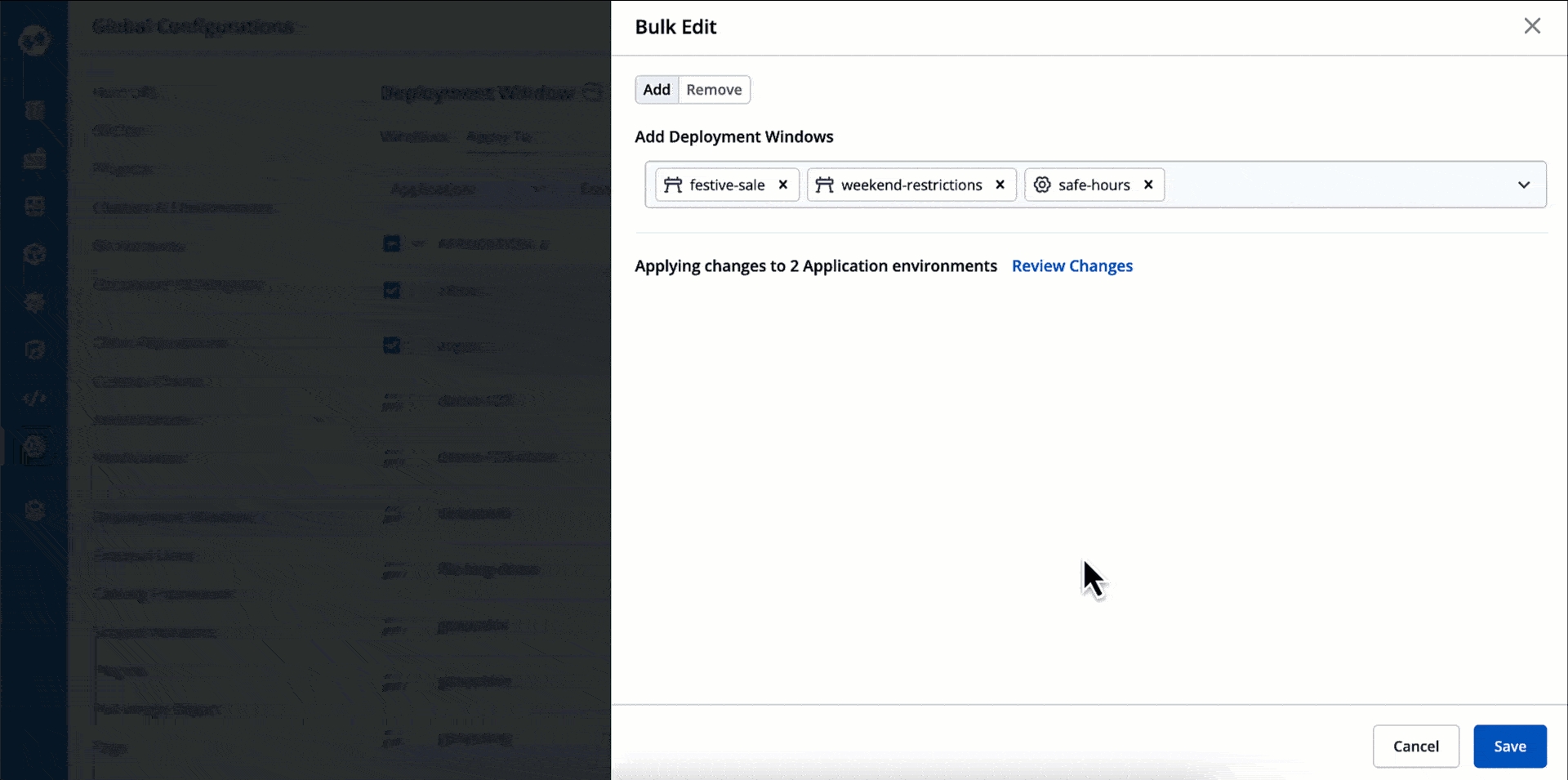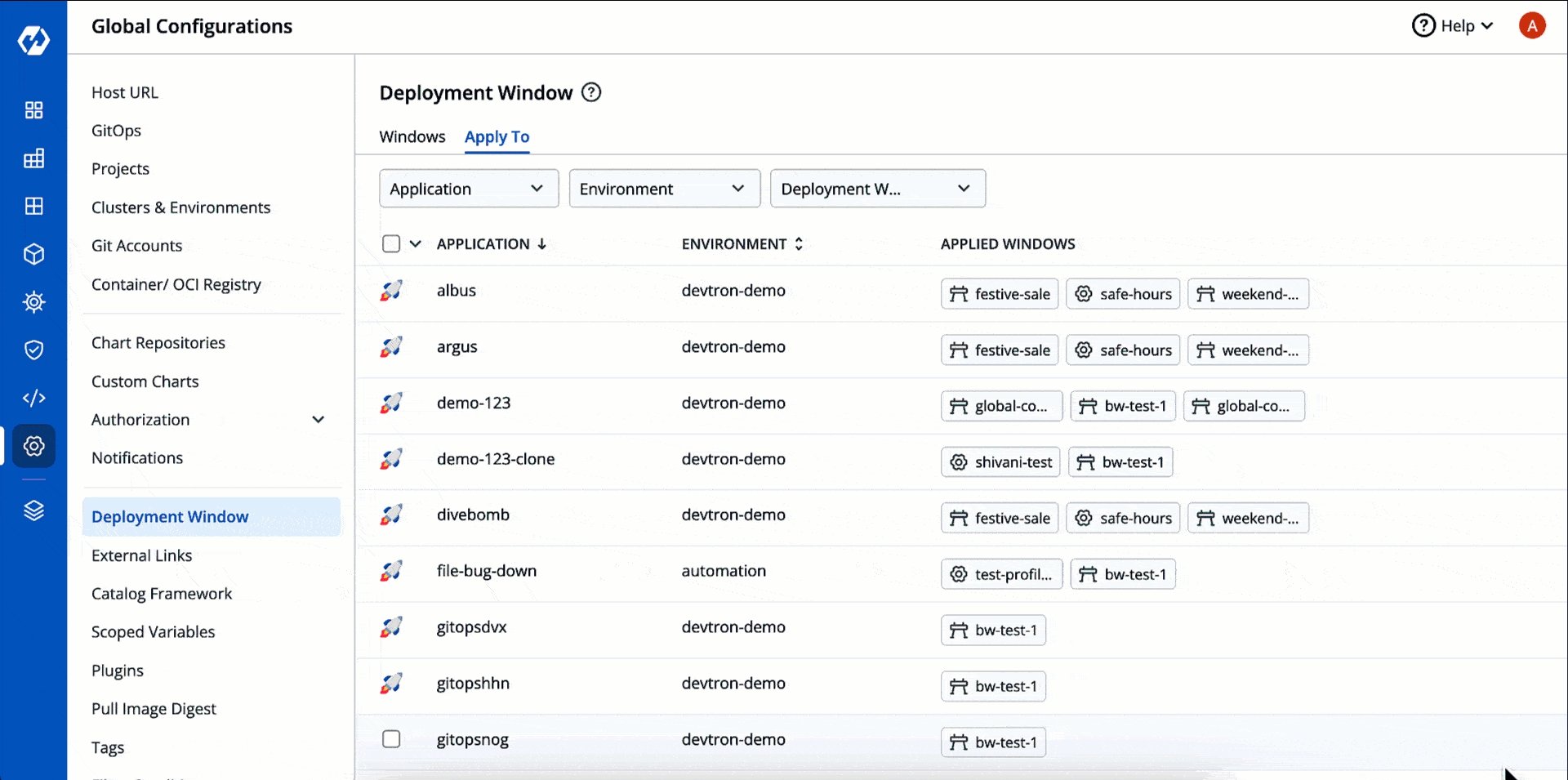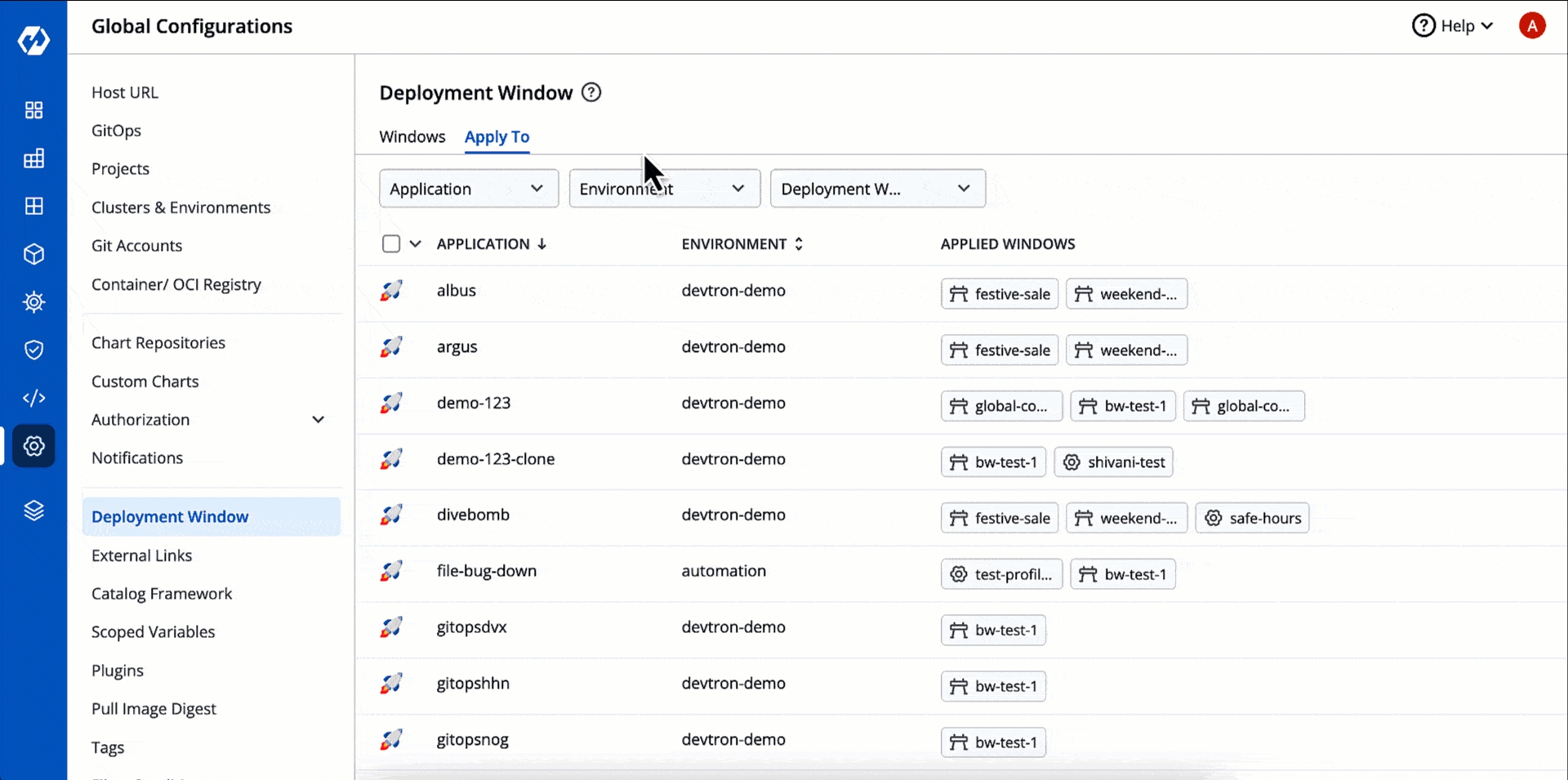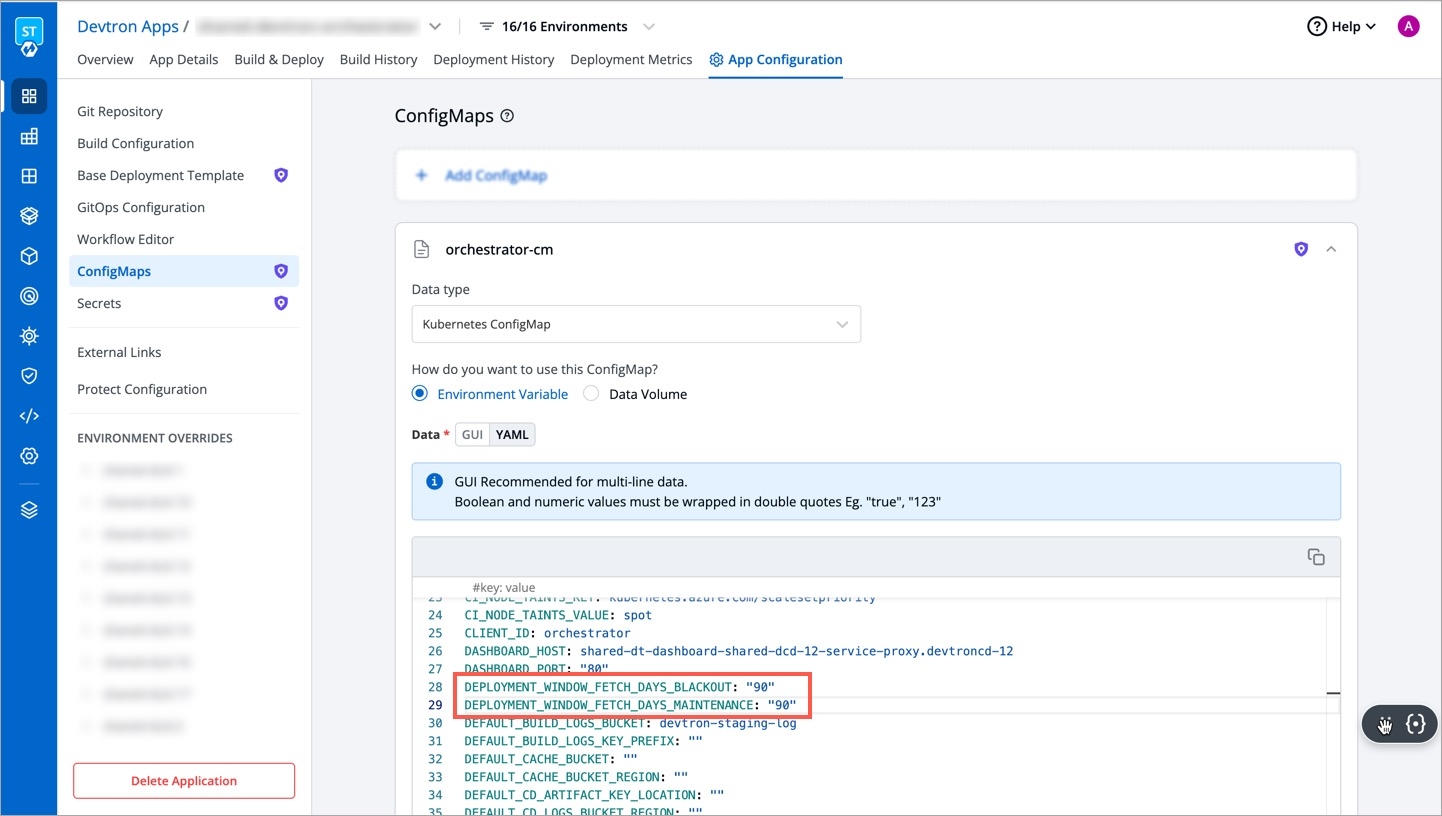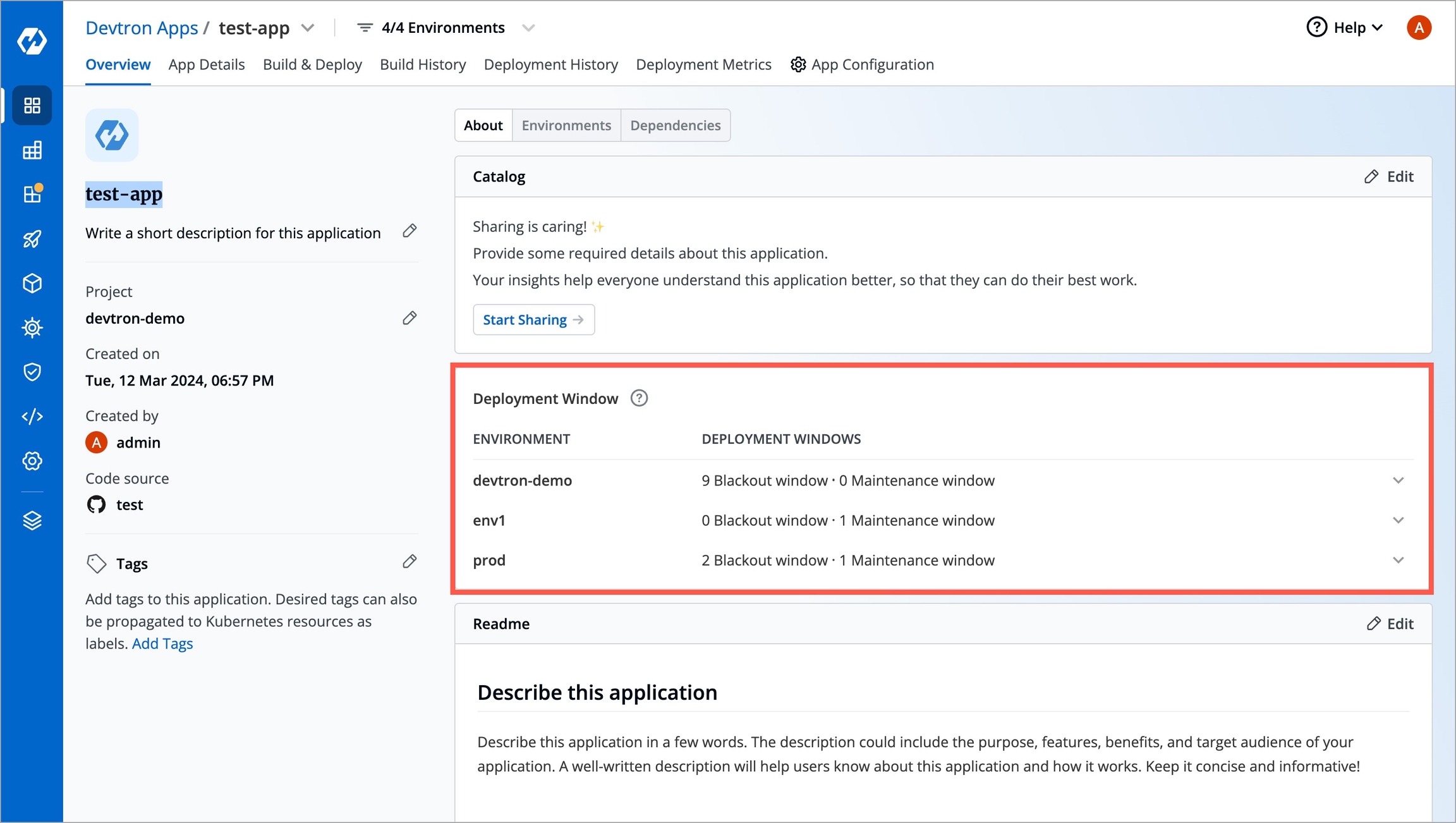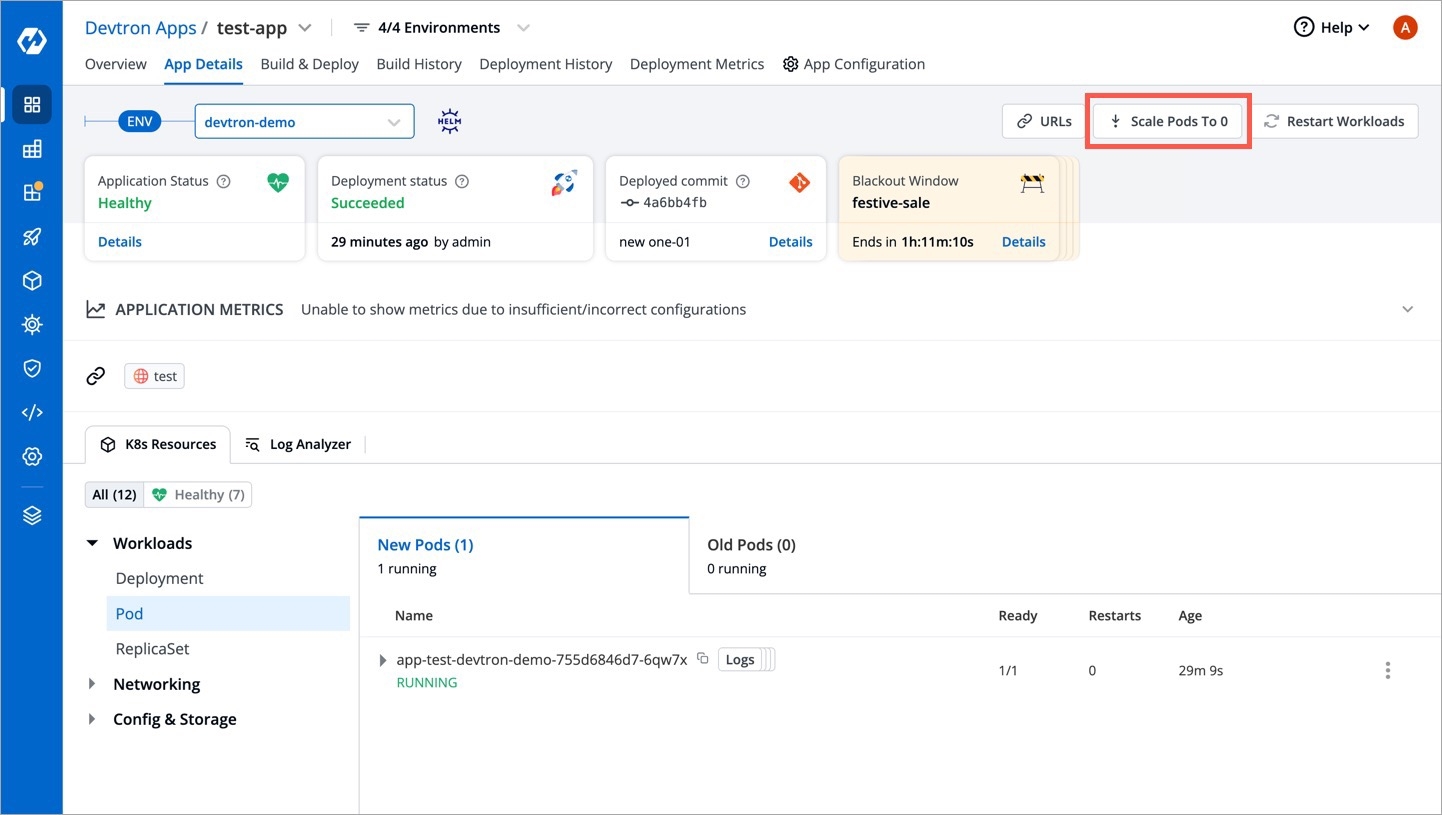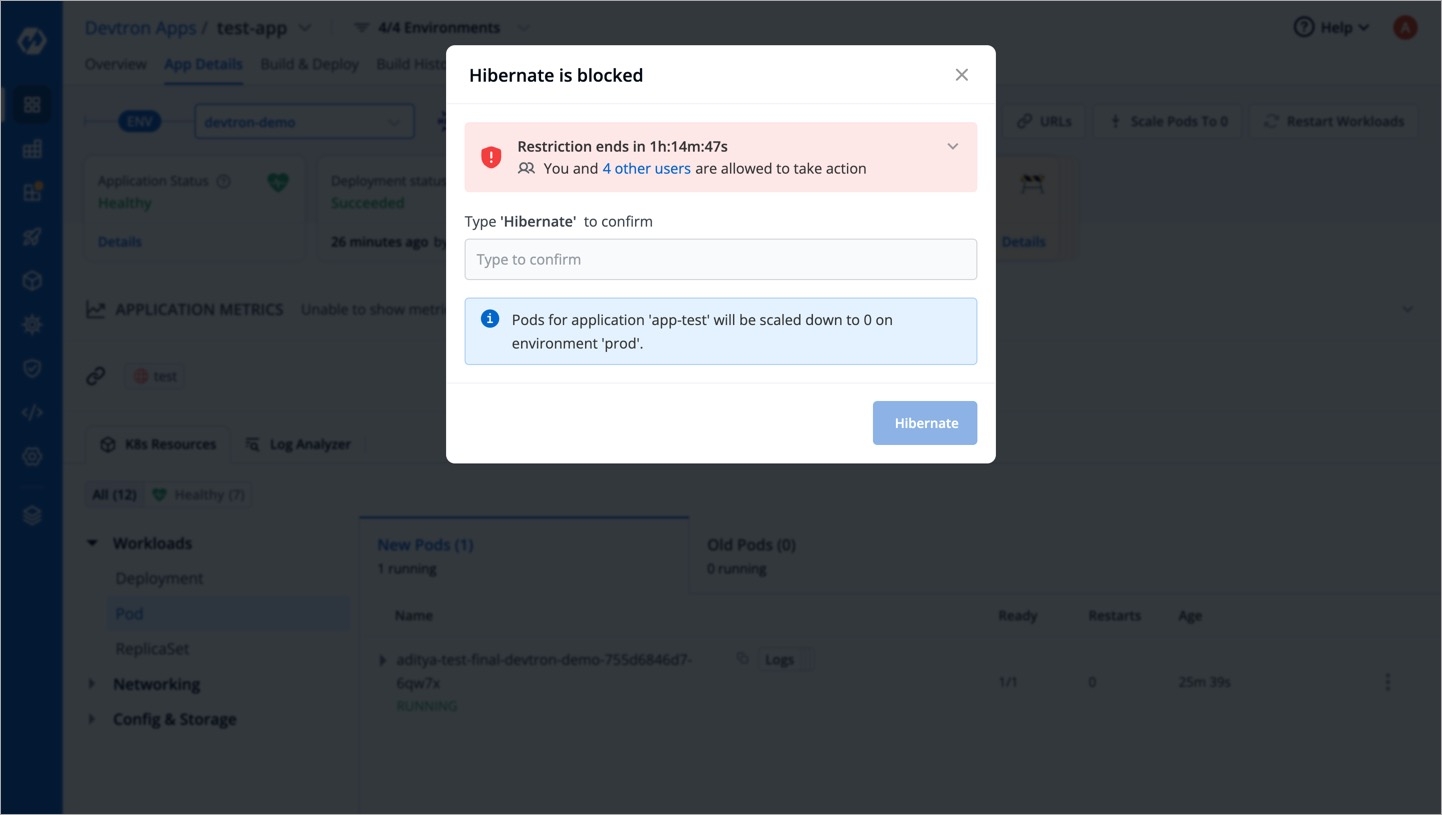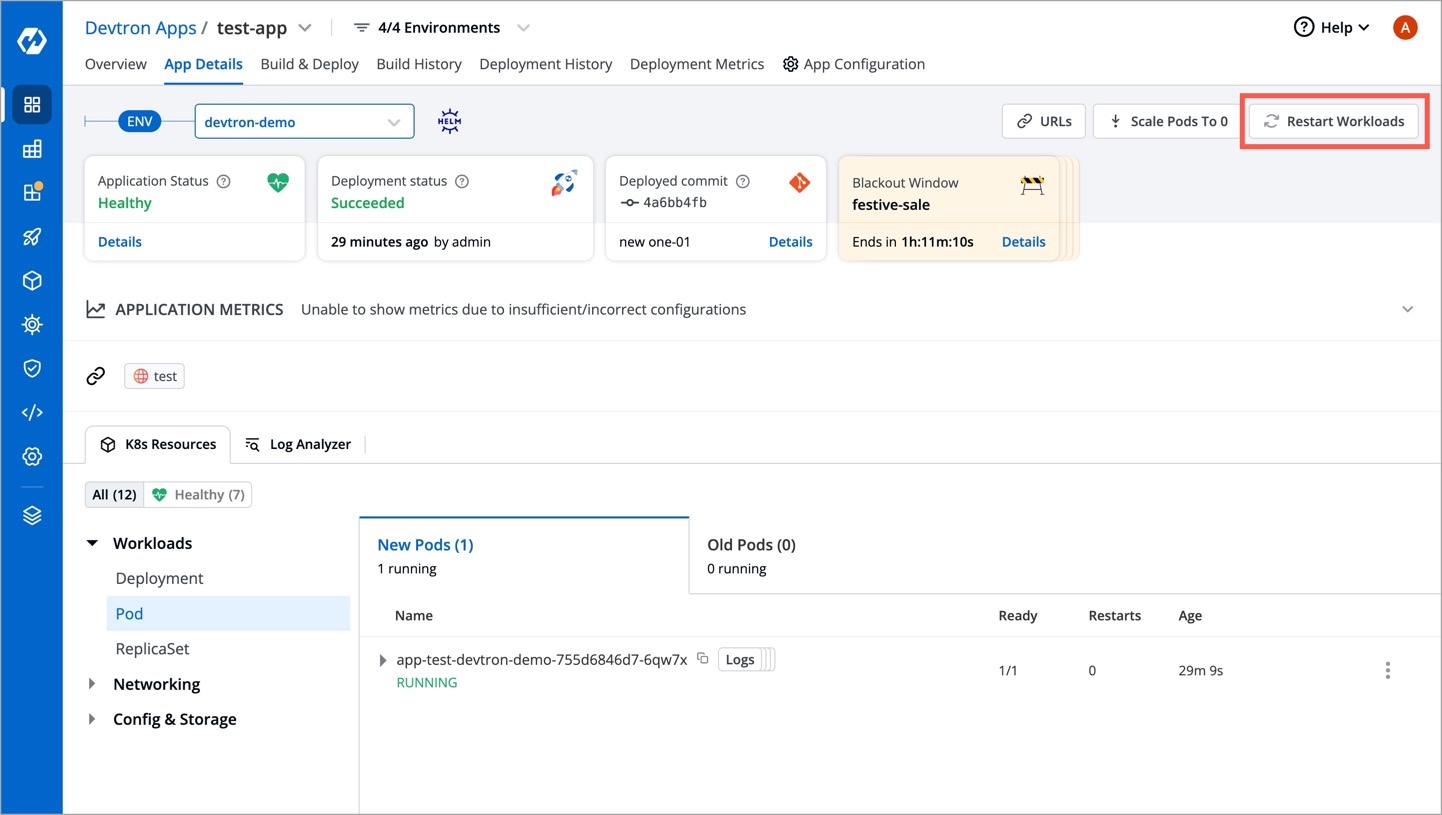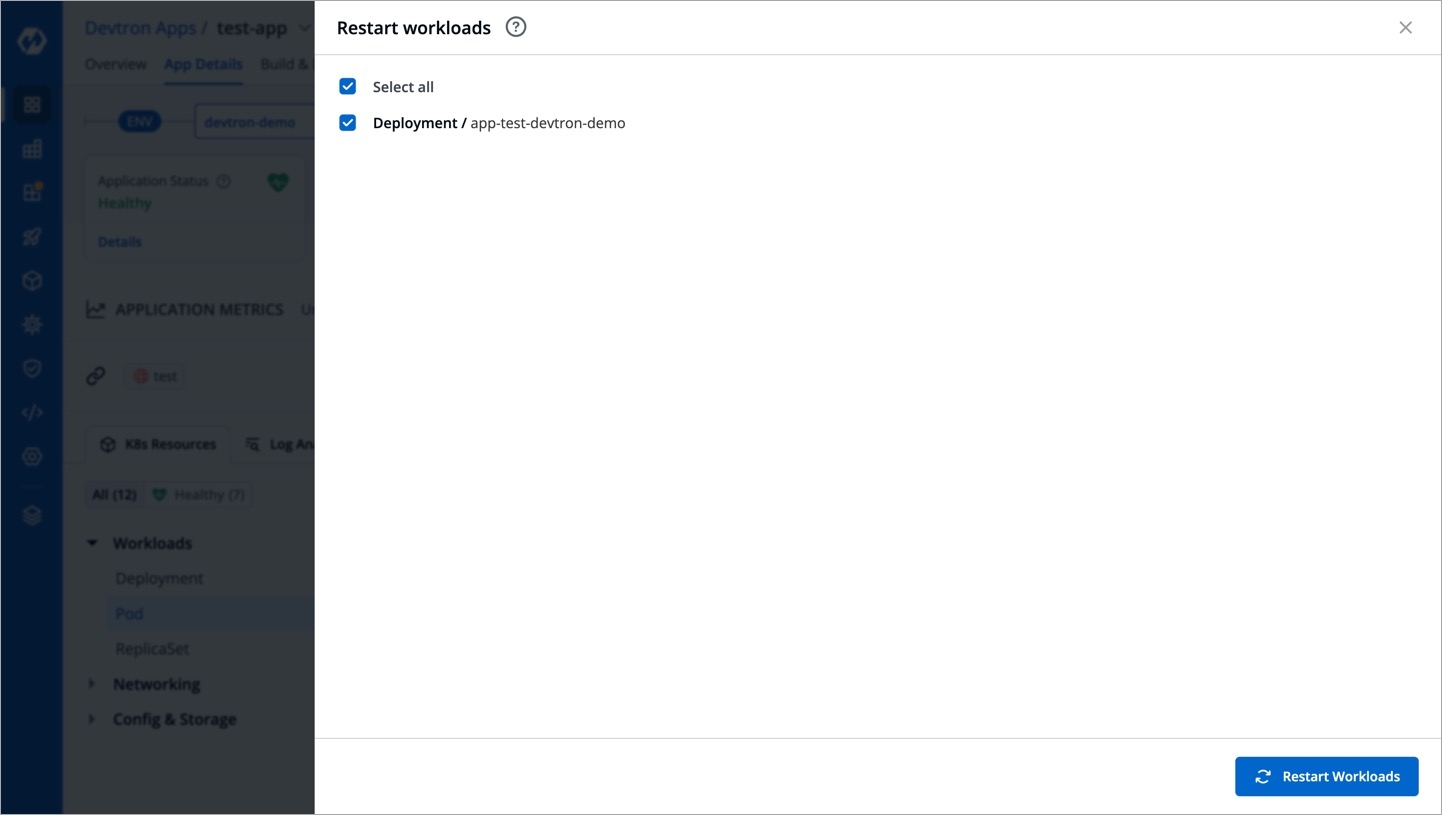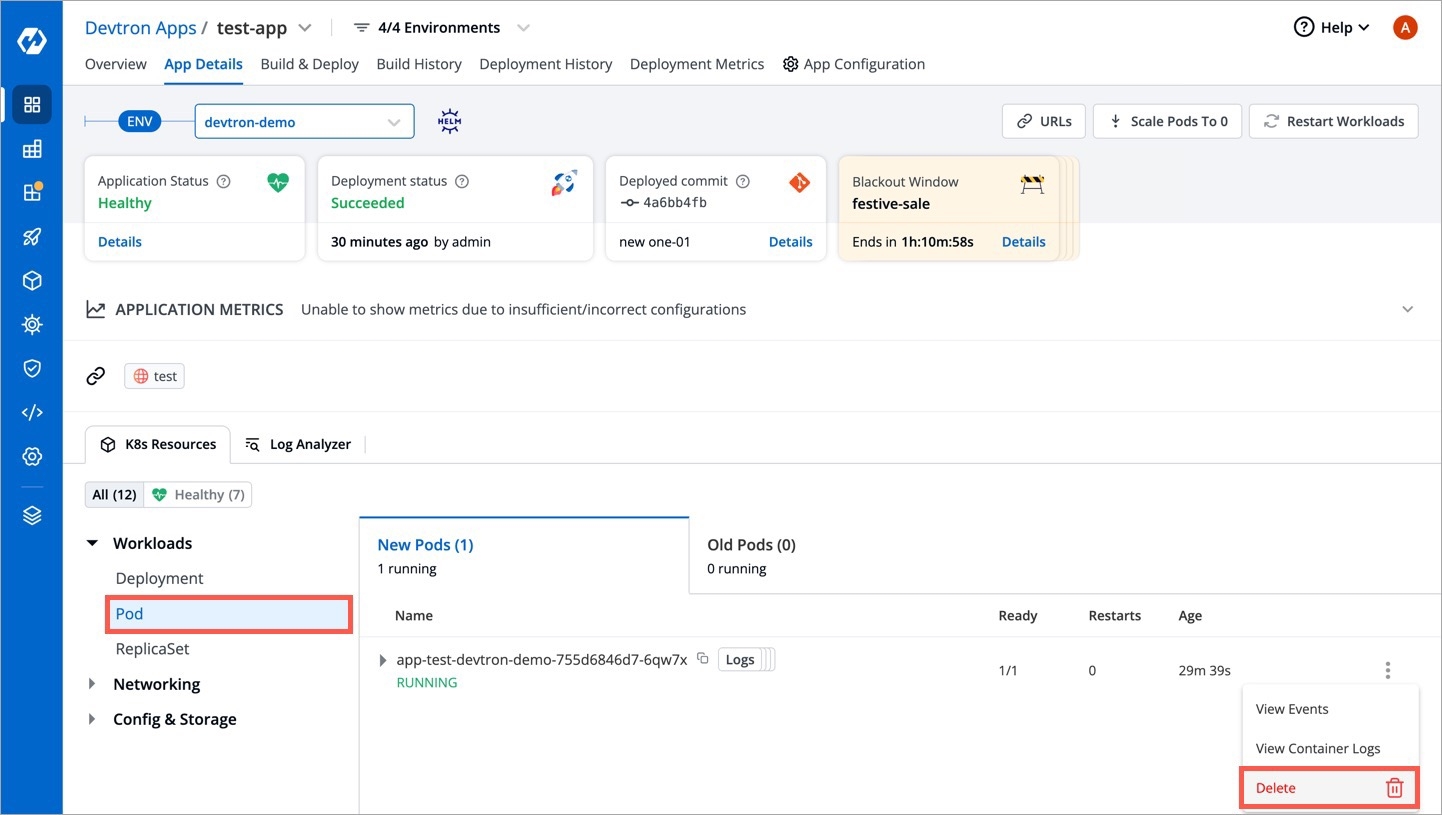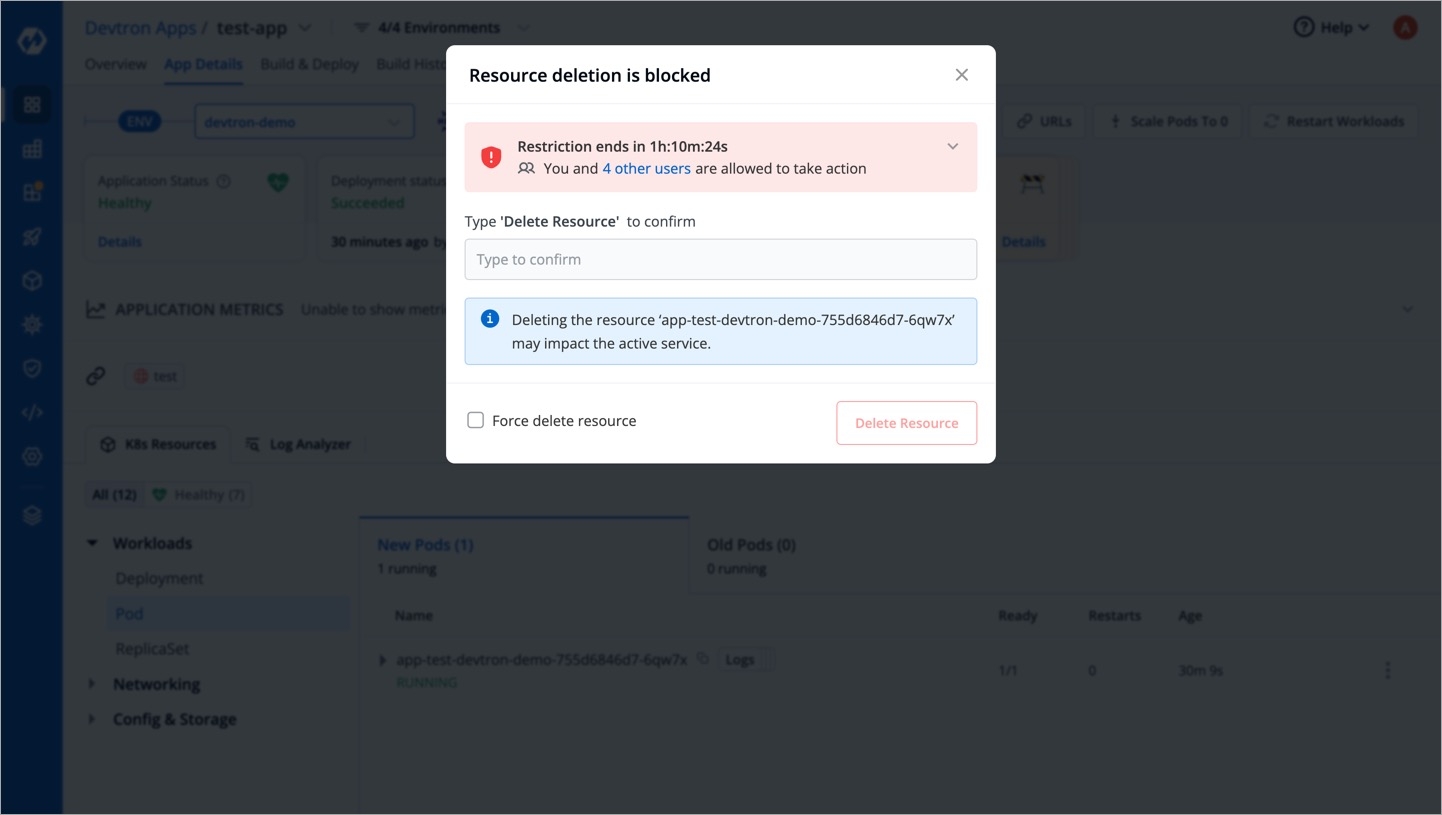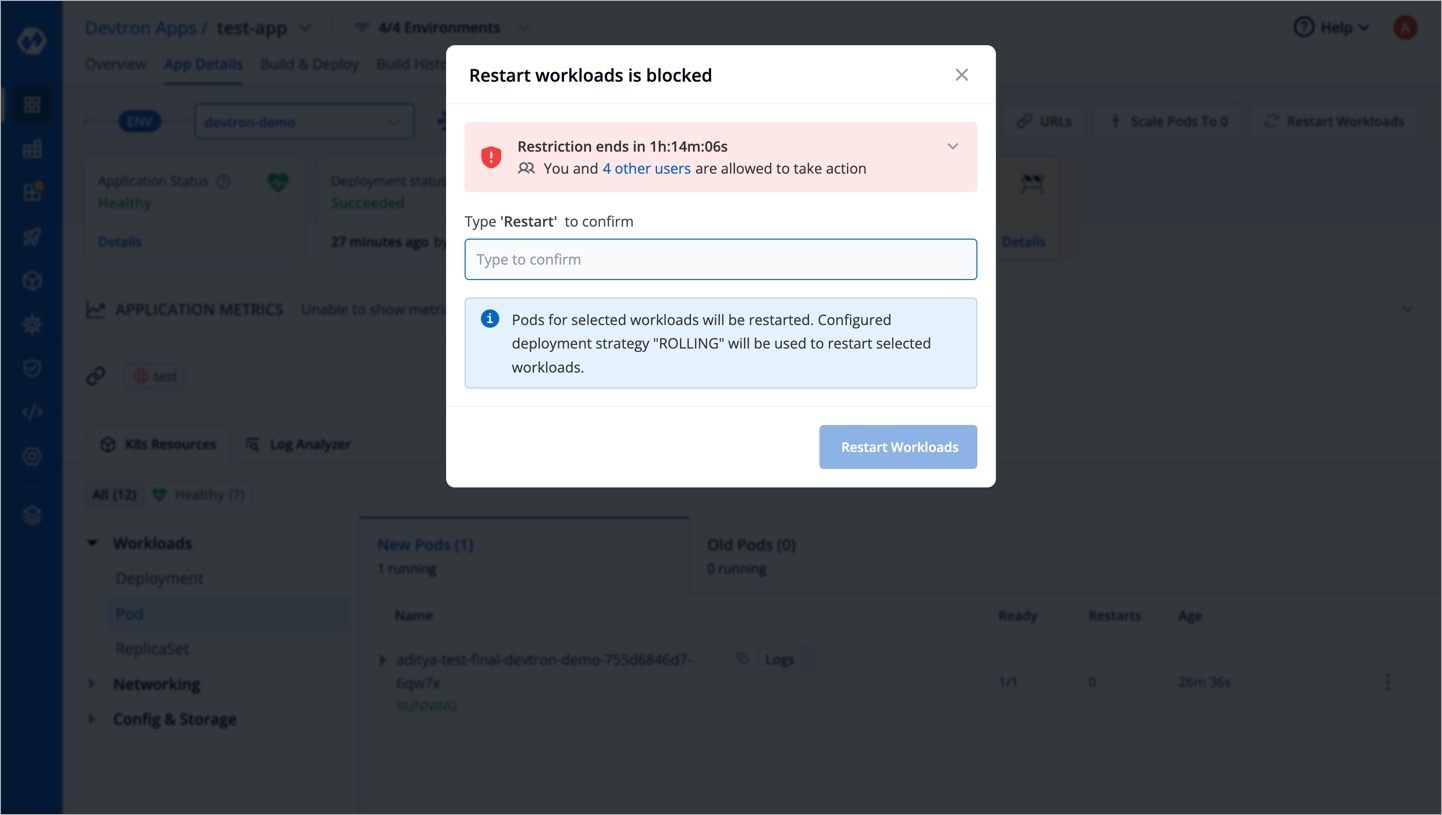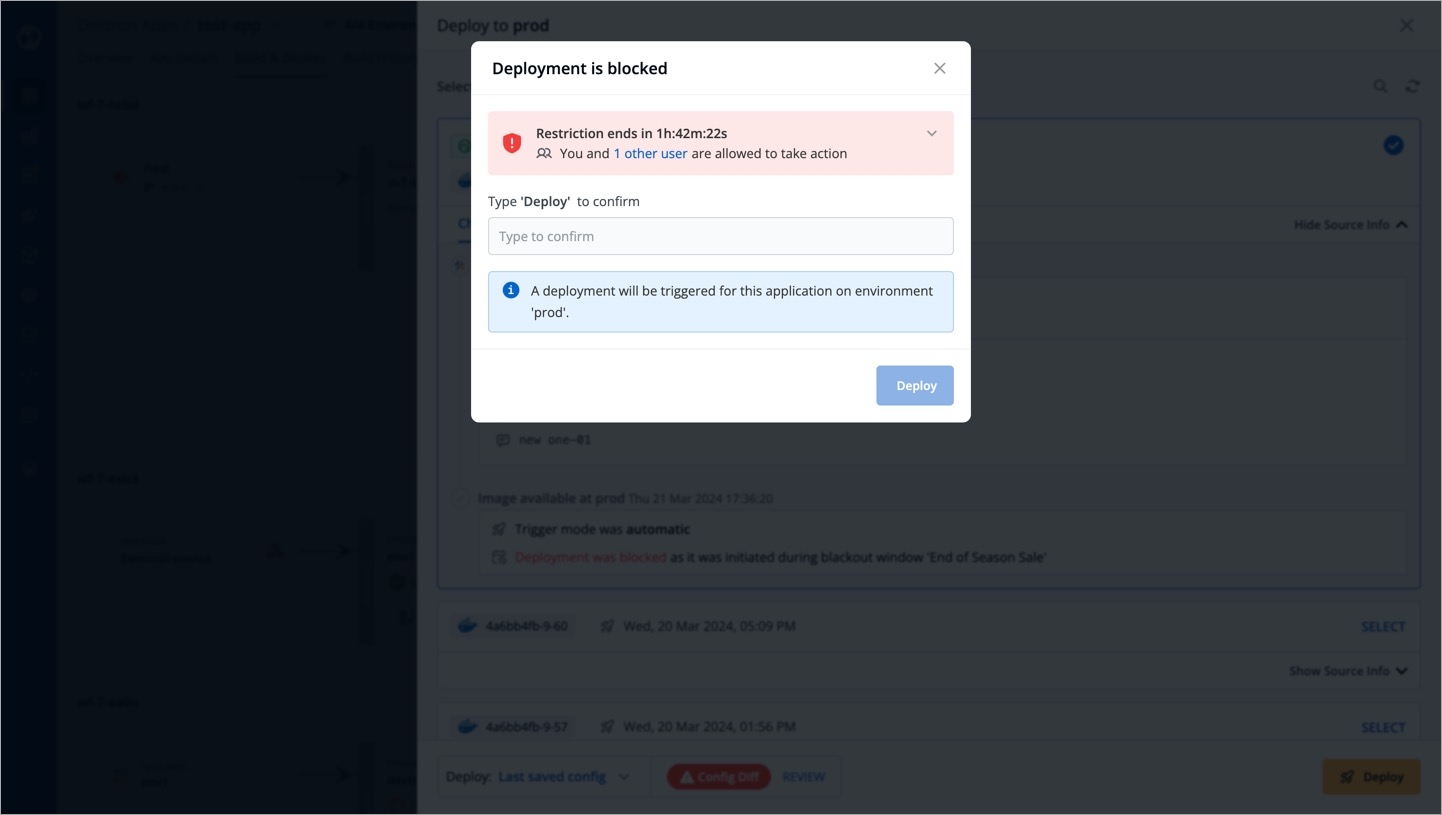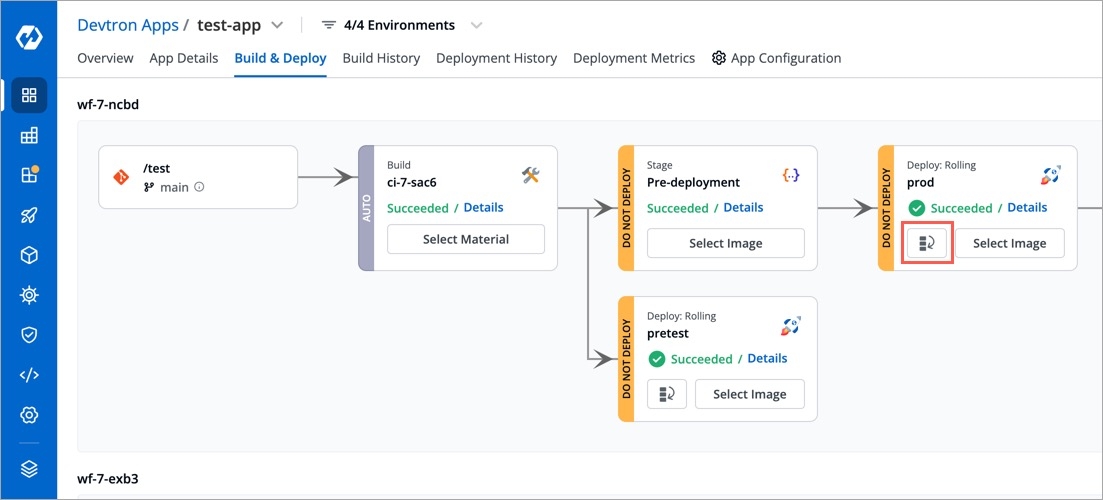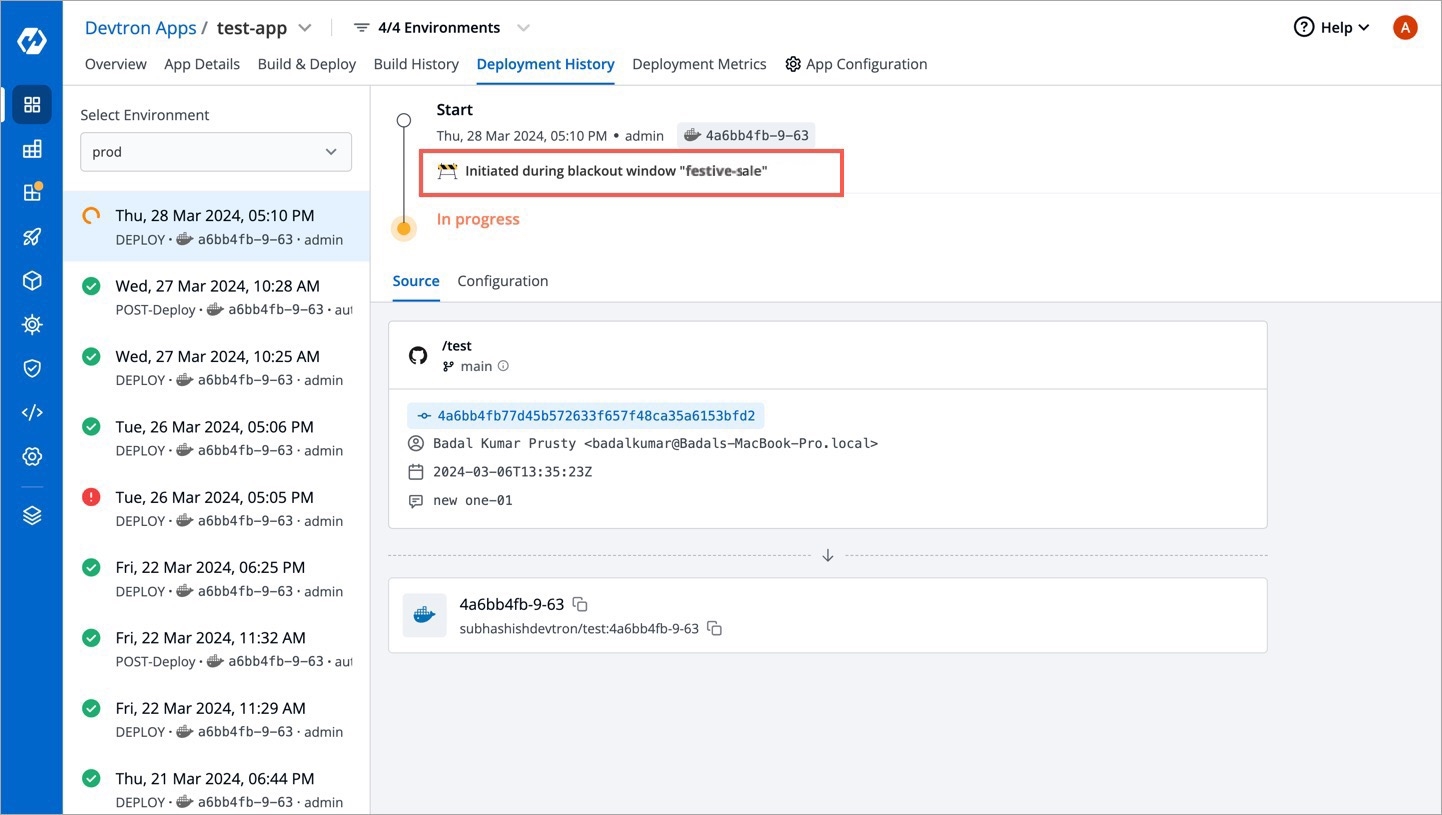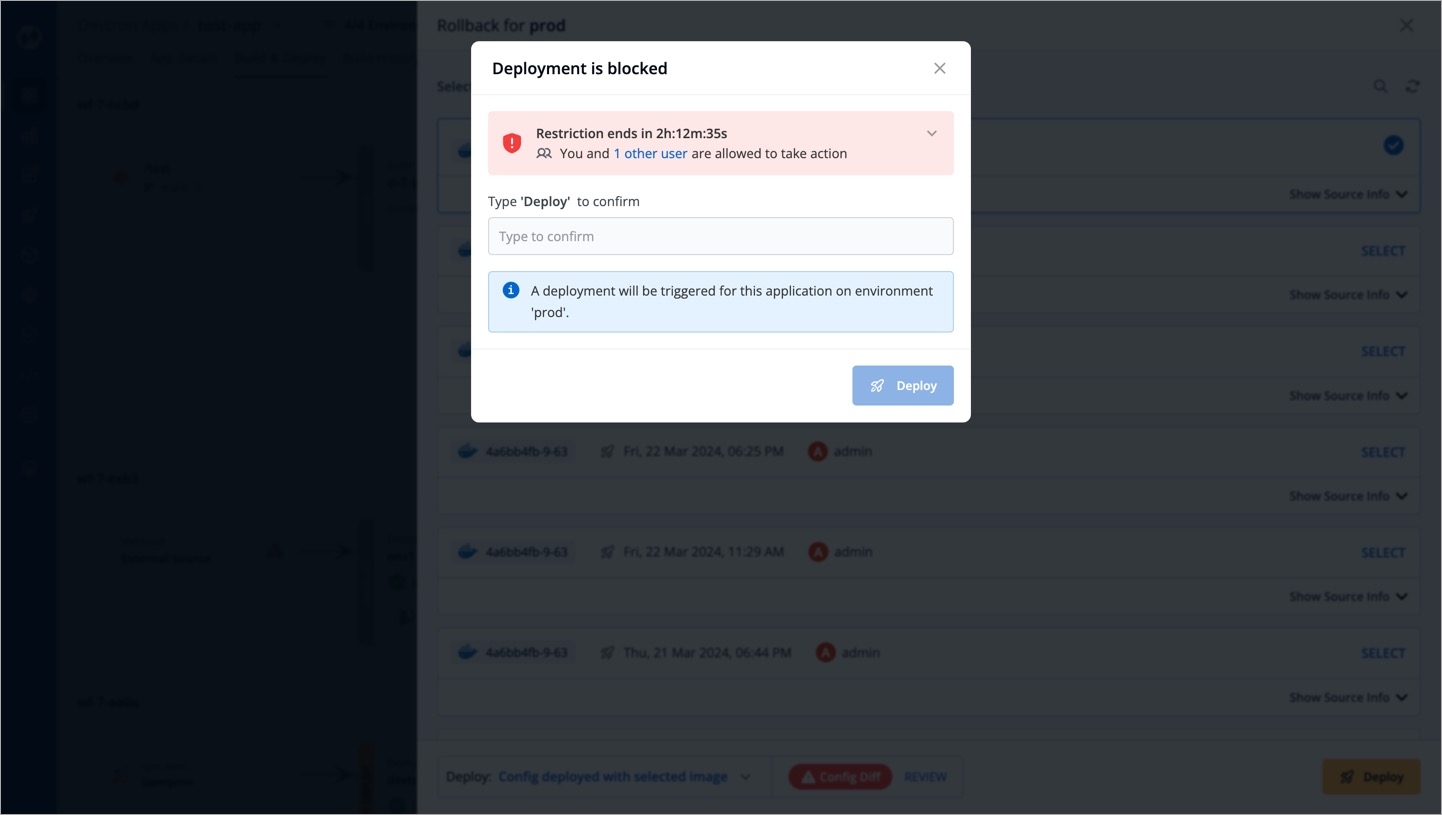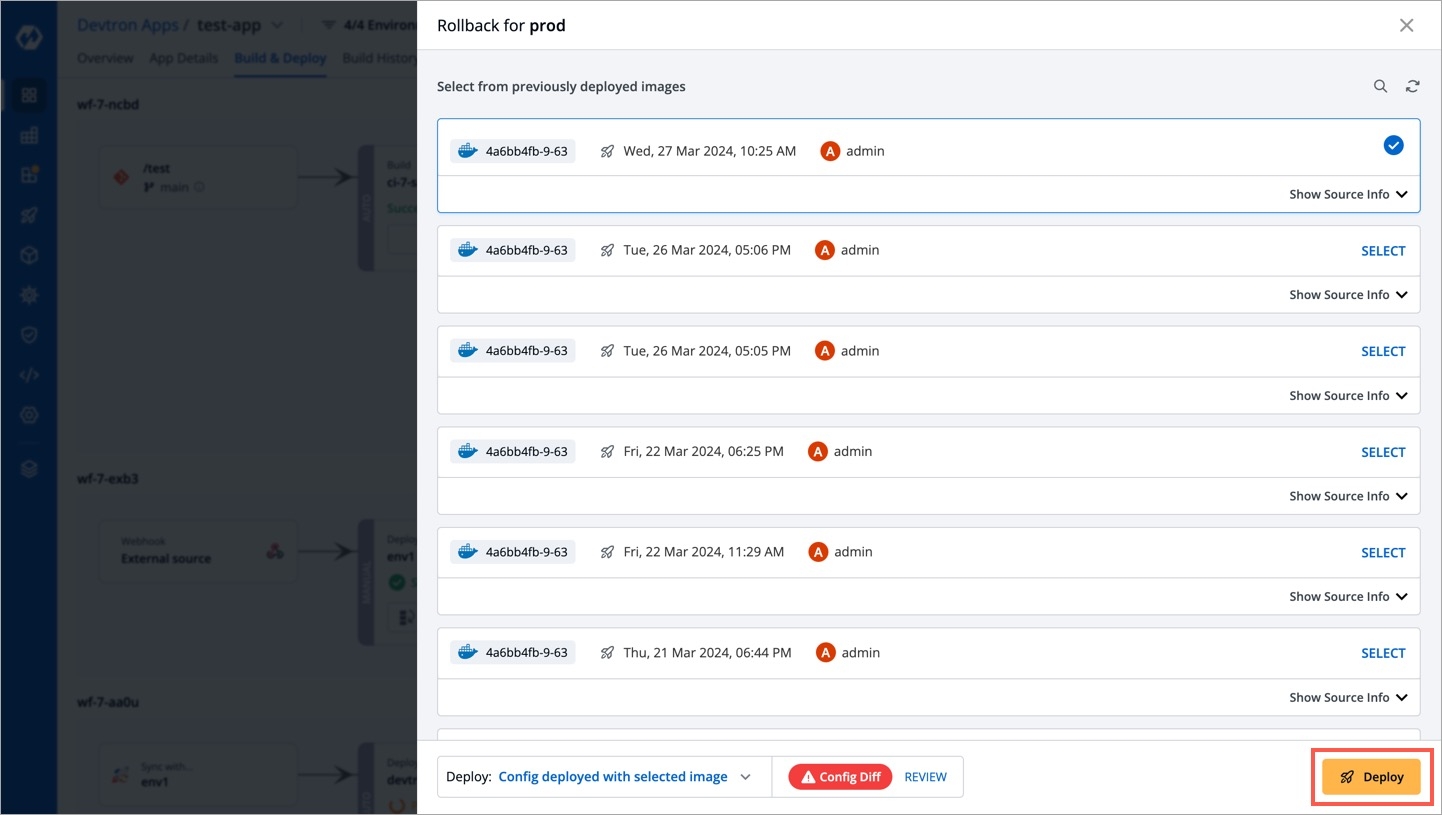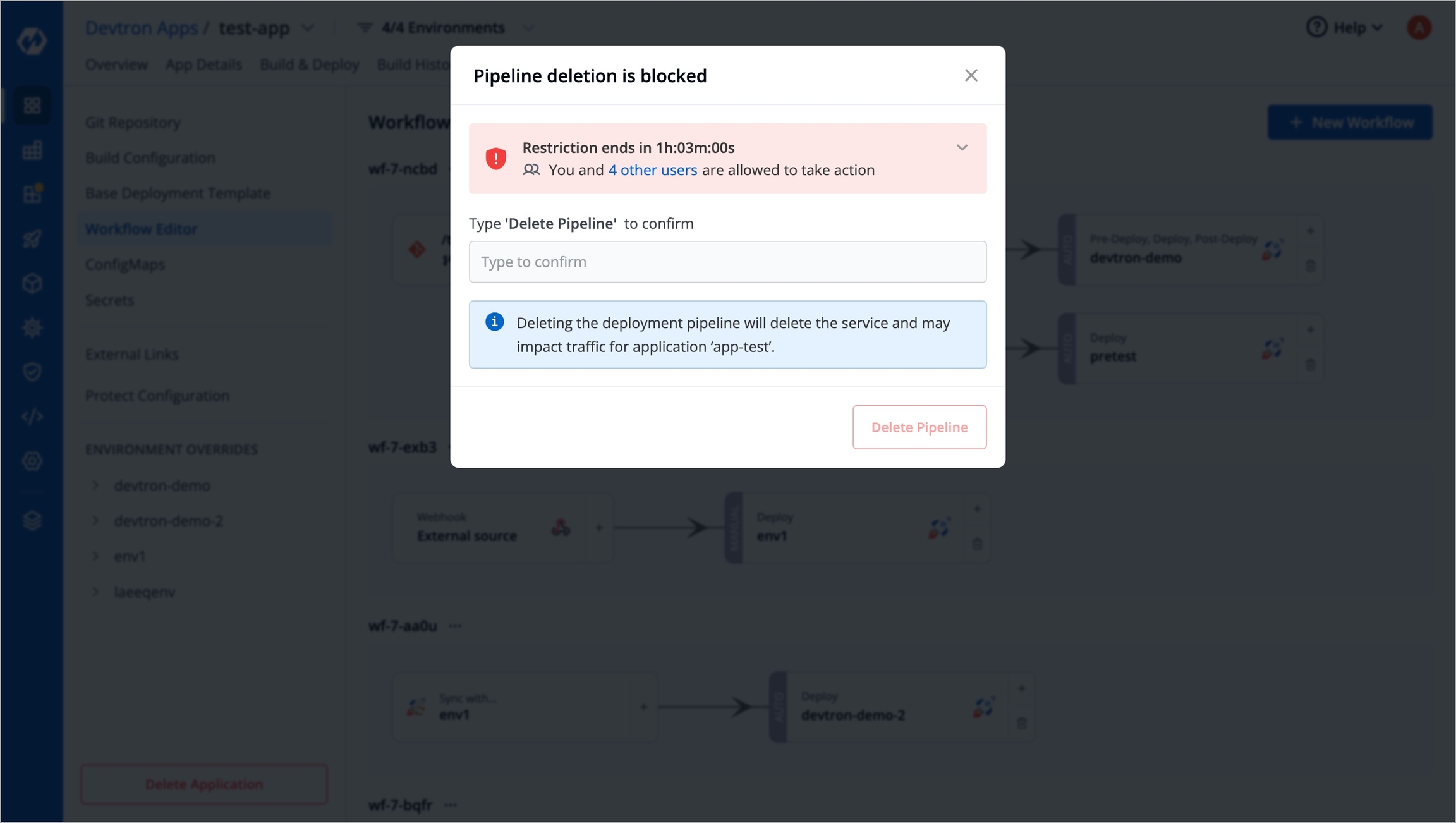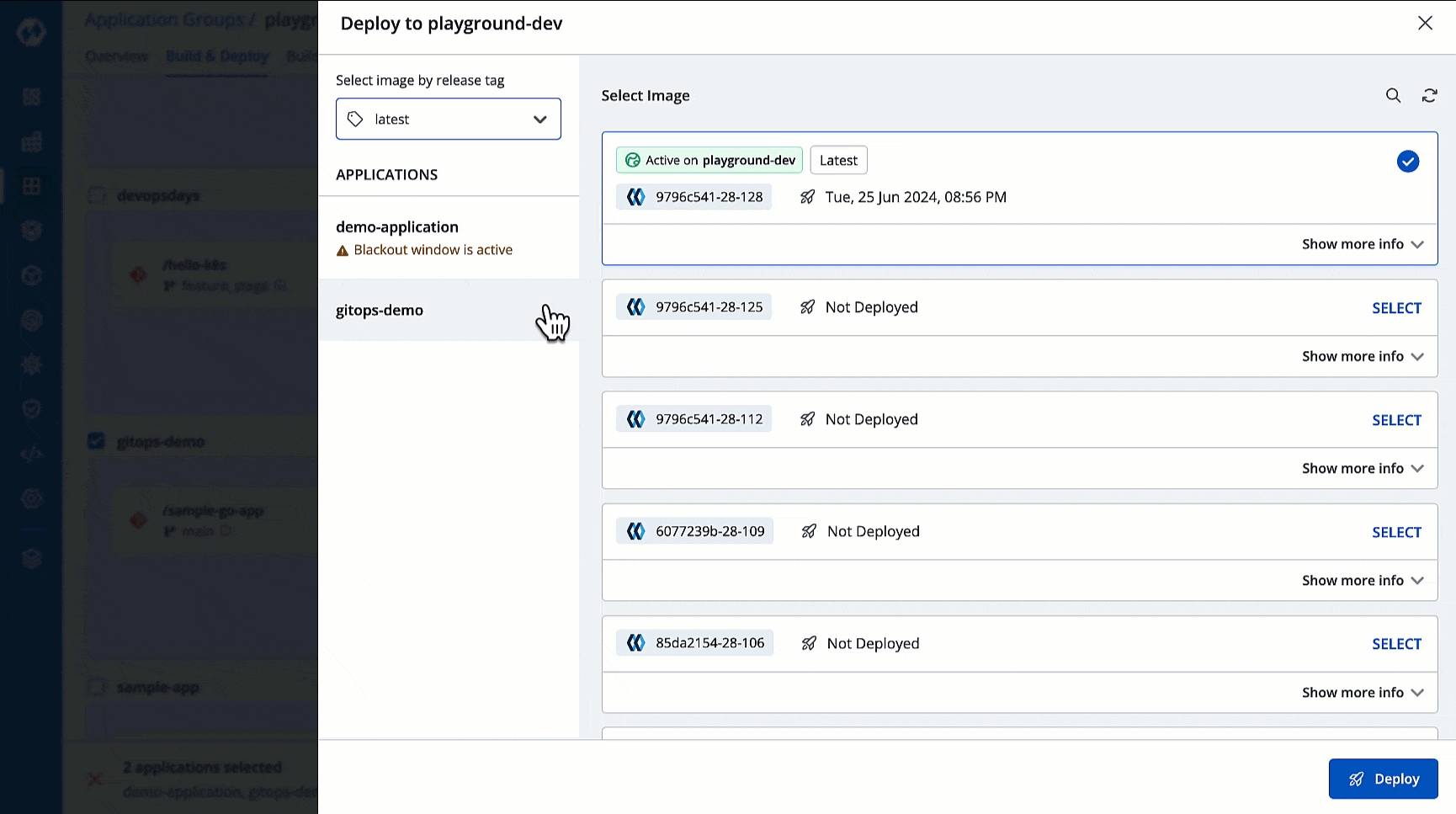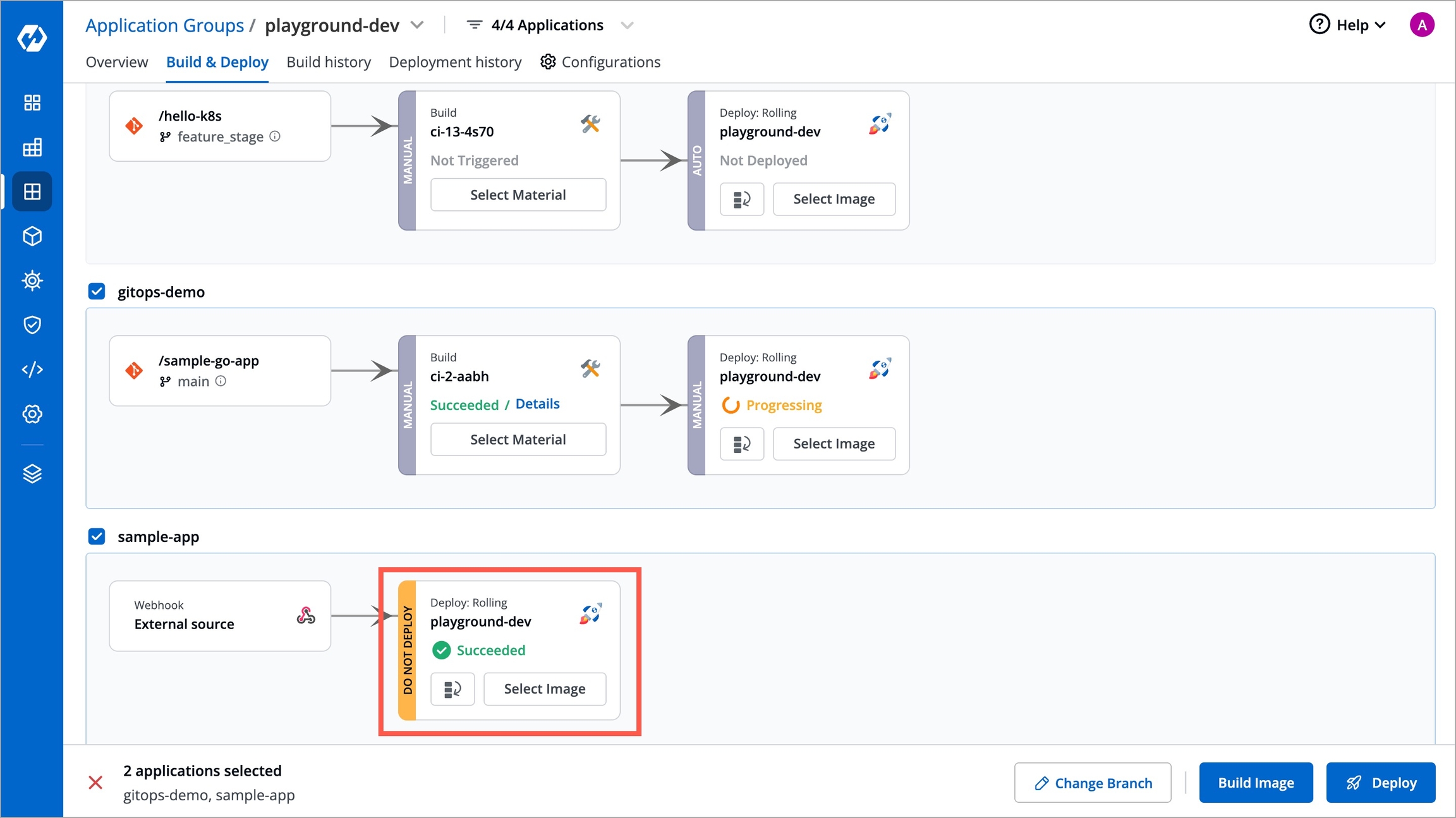Deployment Window
Last updated
Last updated
Unplanned or last minute deployments of applications can affect the services of an organization. Consequently, its business impact will be severe if such disruptions occur during peak hours or critical periods (say festive season or no deployment on Fridays).
Therefore, Devtron comes with a feature called 'Deployment Window' that allows you to define specific timeframes during which application deployments are either blocked or allowed in specific environments. Moreover, actions that can potentially impact the existing deployment are also restricted, which include:
However, exempted users can still perform the above actions even during blocked periods.
Definition
Time period during which deployments are not allowed
Only time period during deployments are allowed
Use
To block deployments when systems are already stable and running a critical business in peak hours
To allow deployments preferably during non-business hours so as to minimize any negative impact on end-users
In case of overlap?
Blackout window gets a higher priority over maintenance window
Maintenance window has a lower priority
Technically, both of them are different methods of restricting deployments to an environment. For example, specifying either a blackout window of [8:00 AM to 10:00 PM] or a maintenance window of [10:00 PM to 8:00 AM] essentially does the same job. You can define either of them depending on your use case.
Go to Global Configurations → Deployment Window.
This involves two parts:
This involves the process of creating a blackout window or a maintenance window.
In the Windows tab, click + Add Window.
Give an appropriate name to your deployment window (e.g., weekend restrictions) and write a brief description that explains what the deployment window does. Refer this section to view the pages where the window name and description will appear.
Choose a deployment window type, i.e., maintenance window or blackout window.
In your deployment window, make sure to choose the correct time zone (by default it is determined from the browser you use).
Let's say you are a super-admin located in New Delhi (GMT +5:30) and you wish to restrict midnight deployments according to the Californian timings (GMT -07:00) for your team in the US. Therefore, it's crucial to choose the correct time zone (i.e., GMT -07:00) and then add the duration (see next steps).
This ensures that deployments occur at the intended local time, helping to avoid disruptions, and facilitating co-ordinated operations across different regions.
Click + Add duration.
The following options are available for you to enforce the deployment window:
Once: Use this to make your deployment window active between two specific date and time, e.g., 20 Jun 2024, 08:00 PM ➝ 26 Jun 2024, 05:00 PM
Daily: Use this to make your deployment window active everyday between specific timings, e.g., daily between 12:00 AM ➝ 06:00 AM
Weekly: On selected days at specific timings, e.g., Wed and Sun • 02:00 AM ➝ 05:30 AM
Weekly Range: Between days of the week, e.g., Mon (02:00 AM) to Fri (05:30 AM)
Monthly: On or between days of the month, e.g., Day 1 (10:30 PM) to Day 2 (06:30 AM)
You can also add Start Date and End Date to your recurring deployment window.
Start Date
Use this to enforce restrictions of a deployment window only after a specific date
End Date
Use this to stop restrictions of a deployment window beyond a specific date
Both Start Date and End Date
Use these to confine your deployment window restrictions between two dates
Let's say you wish to enforce a blackout window every weekend to prevent unsolicited deployments by your team. If you select a weekly range (e.g., Saturday 12:00 AM to Monday 12:00 AM) and apply the deployment window without specifying dates, the weekend restrictions will persist indefinitely.
However, by specifying a start date and an end date (as shown below), your deployment window will have a defined validity period. This ensures that the deployment window restrictions are temporary and do not extend beyond the intended timeframe.
After clicking Done, you can use the + Add duration button to add more than one duration (for e.g., one monthly and one weekly) in a given deployment window.
You can also determine the users who can take actions (say deployment) even when restrictions are in place. These can be super-admins, specific users, both, or none.
Enter a display message to show the user whose deployment gets blocked, e.g., Try deploying on Monday - Weekend deployment is not a best practice - Contact your Admin. This will help the user understand the restriction better.
Click Save Changes.
If required, you can edit a deployment window to modify it as shown below.
You may delete a deployment window if it's not needed anymore. If the deployment window was applied to any deployment pipeline (application + environment), the restrictions would no longer exist.
This involves the process of applying the deployment window you created above to your deployment pipeline(s).
Go to the Apply To tab and click the No windows dropdown next to the [application + environment] you wish to apply deployment window(s).
Select the deployment windows from the dropdown and click Save Changes.
If you wish to apply deployment windows to multiple applications and environments at once, use the checkbox.
We recommend you to use the available filters (Application, Environment, Deployment Window) to simplify the process of application + environment selection.
On the floating widget, click Manage Windows.
Click the Add Deployment Windows dropdown to choose the deployment window(s).
Use the Review Changes option to confirm the impacted environment(s) and click Save.
You can remove deployment window(s) applied to one or more deployment pipelines as shown below.
The Deployment window section shows the blackout and maintenance windows configured for each environment of the application.
However, if a deployment window doesn't exist for an environment, the message No deployment windows are configured would be displayed next to it.
You may click the dropdown icon to view the details which include:
Type of deployment window (Blackout/Maintenance)
Name and description
Frequency of window (once, weekly, monthly, yearly)
Duration
Unlike the Overview page which shows deployment windows for all environments, the App Details page does not show all deployment windows configured for the environment. It shows:
Active deployment windows
Upcoming deployment windows
For example, if the super-admin has configured 4 deployment windows (say 2 Blackout and 2 Maintenance), you will see 4 cards stacked upon each other. However, no cards will be shown if deployment windows aren't configured. You may click on the windows card stack to view the details of active and upcoming deployment windows.
The default time period for showing upcoming deployment windows is 90 days. You can configure this individually for blackout and maintenance windows, via ConfigMap, in the Orchestrator microservice as shown below:
The below functions are blocked during an ongoing blackout window or outside maintenance window.
The exempted users specified in the deployment window configuration can perform the above actions.
When you hibernate an application, it becomes non-functional. To avoid this, hibernation of application is blocked.
Although Kubernetes handles the restart process smoothly, there is a possibility of interruptions or downtime. To avoid this, restarting workloads (say Pod, Deployment, ReplicaSet) of an application is blocked when deployment is restricted.
Similar to restart workloads, deletion of workloads might disrupt the desired state and behavior of the application, hence it is barred during a deployment block.
Go to the Build & Deploy tab. The CD pipelines with restricted deployment will carry a DO NOT DEPLOY label.
Despite that, if a user selects an eligible image and proceeds to deploy, it will show Deployment is blocked along with a list of exempted users who are allowed to deploy.
Not just manual trigger, deployments remain blocked even if the trigger mode is automatic. In such cases, if a new CI image is built, the user has to manually deploy once the deployment block is lifted.
The Deployment History tab will also log whether a given deployment was initiated during a blackout window or outside a maintenance window.
Rolling back to an older version, by using a previously deployed image, is barred during a deployment block.
Go to App Configuration → Workflow.
In Devtron, deleting a CD pipeline affects the current state of the deployed application. Moreover, it might impact future deployments and you will also lose information about past deployments, i.e., Deployment History.
If you attempt to delete any CD pipeline with restricted deployment, it will show Pipeline deletion is blocked.
Just like application, application groups are also subjected to deployment windows.
Let's say you have 10 applications in your application group, and a blackout window is ongoing for 3 of them. In such a case, if you deploy your application group, those 3 applications will not get deployed. Therefore, you might experience a partial success along with an option to retry the failed deployments.
The same stands true for other bulk actions like hibernate, unhibernate, and restart workloads.


